Mi Smart Gateway (review)
We’re now into 2020, and what better way to start things off with a new product review! Today we’re looking at a device we first reported on way back in May of 2019, and although this surfaced after news of the Aqara M2 Hub, it seems to have been first ‘past the post’ in terms of getting into stores. Being first is one thing, but it doesn’t necessarily mean the best, and today I’d like to see if that rings true in this case.
By way of an introduction to the Mi Smart Gateway, it’s really just an evolution of the original Mi hub, which, like the current Aqara hub, is a pill-shaped gateway with the plug built right into the device itself. This new hub differs on many levels, first of which is that it is HomeKit compatible out of the box. It also no longer has the built-in plug and doesn’t come with either a speaker or a night light. So, is this a step forward or a step back? Let’s find out…
PACKAGING
The packaging for the Mi Smart Gateway follows the same theme as previous recent products, with a white box, featuring the product on the front, icons to the side that tout certain features, and the specifications on the back. Of note, is that the HomeKit logo appears on the front, which is reassuring for anyone who’s unsure which devices are or aren’t compatible; This is. It also features the ‘Works with Mijia’ logo, so this will work in the Mi Home app exclusively, and will not work with the Aqara app, in case you were wondering. The rear of the box is also notable in that it’s the first time (that I’m aware of) that the official Zigbee logo has been used. Indeed, it also says below the logo that this is a certified product, which I’m taking to mean they’ve jumped through all the right hoops in order to get to this state. Below that is a Bluetooth logo. The reason for this is that whilst this is ostensibly a Zigbee hub, it also acts as a Bluetooth hub and a Bluetooth mesh hub, which I’ll go into later.
The sides of the box point out these latter two capabilities, stating that this hub is both a Bluetooth Mesh Gateway as well as a Zigbee 3.0 gateway. The other side of the box simply states that you can use the app to control your devices, including the hub, as well as create automations.
Inside the box, you first get to see the gateway itself, along with a manual (in Chinese), which includes the first of three instances of the HomeKit code. The gateway has a bit of protection by way of an extra lid inside the box, made of strong card. The lid also contains the second of three HomeKit codes. Underneath the hub is the section that holds a USB to micro USB cable and a type A (non-polarised) 2-pin USB plug charger.
THE HUB
The gateway itself is a very understated, being just pill-shaped piece of plastic, at 25mm/0.98in in height, and 90mm/3.54in in diameter. The top features the Mijia ‘shield’ logo and a very small LED, whilst the base has the third of the three HomeKit codes.
the rear and front of the gateway are similarly minimalist, with only one button on the front, which you can use for manually pairing a device, or for resetting the gateway. The rear features a micro-USB port for the included USB cable, in order to power the device. This is one of the areas where the new gateway differs from all previous models. As already mentioned, the previous Mi gateways, including the current Aqara gateway, had a built-in plug. This is problematic in that not only does the hub take up two wall sockets due to the placement of the pins and the size of the device, if you owned a hub that has a different plug to the ones in your country, then an adaptor would also be required.
As the new gateway uses a typical USB power supply, you’re able to replace the provided power supply with one better suited to your region, and as it uses a micro-USB cable, both parts are easy to replace when needed. The USB cable isn’t particularly long, at roughly 850mm/33.4in in length, but as already stated, you can replace this with a longer, or shorter one if you wish.
When I first opened the box and held the hub in my hand, I briefly thought I’d been sent a fake empty case, as it was so light (94g/3.32oz), it felt like there could be hardly anything inside. Luckily my paranoia was misplaced once I plugged it in and got it set up. The plastic used for the device is the same matt type plastic you find on a lot of recent Xiaomi ecosystem products, that are slightly silky to the touch, and resistant to fingerprints, not that you’d have much cause to handle the device. The base has a circular rubber ring to keep it from sliding around if placed on any smooth surface. All in all, it’s a really nice and understated piece of design.
What the gateway doesn’t have, which all previous iterations did, is a speaker and night light. Xiaomi has stated that due to feedback they’ve collected over a period of time, many of their users didn’t feel the need for the night light or the speaker, and so cut those out in order to concentrate on the hub aspect of this device. In many ways, I would agree with this, but I do still find uses for both the night light and the speaker, despite the crappy sounds the older hubs ship with, so I’m not entirely sure this was a good move. Bravo to the company for replacing the built-in plug with a cable though.
Whilst the new gateway doesn’t have a speaker as such, it does have a sort of ‘bleeper’ unit inside, which in itself is fairly loud. You only tend to hear this sound when you’re adding a device or you’ve set the gateway to play the sound via a notification.
SETUP – MI HOME
Update: Since this review was written, the Mi smart Gateway is now able to be added to any region/server in the Mi Home app, even if you originally purchased the hub from one of the online Chinese stores.
Whilst the hub comes with a HomeKit code, you’re still advised to add this to Mi Home first, which if you haven’t done so already, will require you to set up an account in the respective app. Assuming you’ve done all this already, as this is designed for the Chinese market, at present you’re going to need to set the server to Chinese Mainland in order to add this device to Mi Home. Once that’s done, simply add the gateway by clicking on the ‘plus’ icon in the top left corner of the home screen. which will take you to an enormous grid of devices broken down into categories.
- Click on Household security and select Mi Smart Home Hub from the list
- Follow the onscreen instructions, which includes pressing and holding the pairing button down until the LED blinks rapidly in yellow
- Click Next and add your wifi details – network name and password – Click Next
- The hub will use Bluetooth to initially retrieve network information from your phone, so you need to be within a reasonable distance of the hub
- The device will go through a series of steps, which are indicated as a list…
- …Before finally adding the device. Click Done or wait for it to go to the next page
- The next page allows you to rename the hub as you see fit
- Once named, you get the option to add the hub to your HomeKit ‘Home’
- Once you’ve selected your ‘Home’, you will need to scan the included HomeKit code
- The last page will state that ‘Additional Setup (is) Required’, although in this case, it doesn’t seem to need anything else, other than renaming the device in Home and ensuring the hub is in the correct room, as this info isn’t carried over from the Mi Home app to HomeKit
- You’ll then see the hub added to your list of devices in Mi Home
APPLE HOME APP
If you head over to the Home app, you might be surprised to see (or rather not see) that the new gateway is nowhere to be seen. It’s there, but unlike the Aqara hub you may already own, as this is purely a hub, and not a night light and alarm, it really only belongs in the hub section of the app.
- To access this area to make sure the hub has been added, click on the ‘house’ icon in the top right corner of the home screen of the Home app, and select ‘Home Settings…’ to get the settings page.
- Select the Home (you most likely only have one option), then scroll down to ‘Hubs and Bridges’ and select it.
- Hubs and bridges will be listed separately, with you hubs being an Apple TV, HomePod or iPad.
- Below that is your list of bridges. In my case, in the image above, you can see the third item is the Mi Smart Home Hub, located in the Bedroom.
HUB COMPATIBLE DEVICES
So you have your hub in Mi Home and Apple Home app, but what next? Well, as with the Aqara hub, you’re eventually going to want to start adding some devices. Above are three screenshots to show which ZigBee devices are currently supported (at the time of writing), but I’ll list them here too;
Switches/buttons
- Mi Wireless Switch
- Aqara Wall switch (with/without neutral, double rocker)
- Aqara Wall switch (with/without neutral, single rocker)
- Aqara/Opple Scene Switch (2, 4, 6 button)
- Aqara Wireless remote switch (double rocker)
- Aqara Wireless remote switch (single rocker)
- Aqara Wireless remote switch D1 (single rocker)
- Aqara Wireless remote switch D1 (double rocker)
- Aqara Wall switch D1 (with/without neutral, double rocker)
- Aqara Wall switch D1 (with/without neutral, single rocker)
- Aqara Wall switch D1 (with/without neutral, triple rocker)
Sensors
- Mi Motion Sensor
- Mi Door and Window Sensor
- Mi Temperature and Humidity Sensor
- Mi Light Detection Sensor
- Aqara Motion Sensor
- Aqara Door and Window Sensor
- Aqara Temperature and Humidity Sensor
- Mi Smart Smoke Detector
- Aqara Water Leak Sensor
- Mi smart Natural Gas Detector
Smart plugs and outlets
- Mi Smart Plug (CN)
- Aqara Wall Outlet (CN)
Lighting
- Ikea E14 White Spectrum
- Ikea GU10 White Spectrum
- Ikea E27 White Spectrum Opal
- Ikea E27 White Spectrum Clear
- Ikea E27 Warm White
- Ikea E14 Warm White
- Ikea GU10 Warm White
- Aqara/Opple MX960 Ceiling light
- Aqara/Opple MX650 Ceiling light
- Aqara/Opple MX480 Ceiling light
Miscellaneous
- Mi Cube
- Aqara Curtain Controller
There are a couple of placeholders for devices that when pressed, appear to be the forthcoming Aqara light detection sensor, and the Aqara US Light switches, but they fail to add after a few seconds, so there seems to be some work to do. If you were to compare this list to what can be added to the Aqara hub via the Mi Home app, there are a few omissions – once again, this is at the time of writing. By the time you read this review, these devices may well be added to the list;
- Aqara Mini Switch
- Aqara Vibration Sensor
- Aqara Cube
- Aqara Tunable White Bulb
- Aqara Wireless Relay Controller
- Aqara Curtain Controller B1
- Aqara Roller Shade Controller
- Aqara Door Lock S2
- Aqara Door Lock S2 Pro
It would seem whilst the current list of devices compatible with the Mi Smart Gateway isn’t as complete as it is for the Aqara gateway (at the time of writing this review), many of these devices are in fact supported, just not officially at this time, hence their omission. I’m fairly confident that the list of devices will continue to grow, and have since been informed that some devices previously not listed are now visible in the latest list to appear in Mi Home, which is updated from the cloud and doesn’t require an update as such.
There are also a few devices listed in the Aqara app that aren’t listed as officially being able to be added to the Mi Smart Gateway;
- Aqara Motion Sensor T1
- Aqara Door and Window Sensor T1
- Aqara Temperature and Humidity Sensor T1
- Aqara Water Leak Sensor T1
- Aqara Light Detection Sensor T1
- Aqara Smart Plug (US)
- Aqara Smart Plug (EU)
- Aqara Smart Plug T1 (CN)
- Wireless Mini Switch T1
- Aqara Spot Light (tunable white)
- Aqara Spot Light
- Aqara Down Light (tunable white)
- Aqara Door Lock HL
- Aqara Constant Current Driver T1-1
- Aqara Constant Current Driver T1-2
That’s quite a long list of devices that can’t be added, at least not officially, but as already stated, pretty much nearly every device that can be added to the Aqara hub right now will be supported by the Mi Smart Gateway at some point. As to whether this device is actually worth buying over the Aqara hub or even the forthcoming Aqara M2, is a pertinent question. We’ll address that a bit later, but at this point, it would appear that the Aqara hub still has an edge over this device;
Points in favour of the Aqara Hub compared to the Mi Smart Gateway;
- If you’re looking for a system that includes an alarm with a speaker and/or night light.
- If you can get the model of Aqara hub for your country, so there’s no need for an adaptor, and you’re ok with two outlets being blocked.
- If you live in a place where all of your child devices’ Zigbee signals are within reach of the hub.
Points in favour of the Mi Smart Gateway compared to the Aqara Hub;
- You’re looking for a hub that can be used with any USB cable and be used with a USB plug for your particular region.
- You prefer not to have both outlets blocked.
In the original version of this review, we reported on this device only supporting up to 32 devices. Later, from information we were supplied with soon after the review was published, in terms of the number of devices it can handle, it seems that the device can support up to 64 devices (various online stores, including Xiaomi’s official 3rd party store – Xiaomi Youpin – are reporting the number to be 32 devices), which is double the official number of devices the current Aqara Hub can handle. The mi.com online store for Mainland China states it can support up to 64 devices, so it seems it’s a case of who to believe. Given that the Mi smart Gateway is a brand new model, and therefore an upgrade, it’s logical to presume they would have doubled the amount of supported Zigbee devices from the original number. Additionally, Sebastian G, our source for all things Xiaomi, was previously able to dig into the backend of the Mi Home app to get information on the number of devices the gateway supported, which at that time was also listed as 64. So, it’s 32 or 64, depending on where you read it and who you believe!
Both the Aqara Hub and the Mi Smart Gateway are compatible with many of the Xiaomi Smart Home ecosystem ZigBee devices, although as previously mentioned, the Mi Smart Gateway is the first ZigBee device to attain ‘certified status’ from ZigBee, so in theory, the hub should be more compatible with 3rd party ZigBee devices, which looks promising when you see a few Ikea bulbs listed. If you currently try adding an Ikea bulb to either the previous-gen Mi Gateway, the Aqara G2 Camera hub or the current Aqara hub, you’ll get nowhere. This does not mean that the Mi Smart Gateway will necessarily expose the Ikea bulbs, or any other ZigBee device to HomeKit however, so unless you’re only invested in the Mi Home side of things, it may be of less interest to you.
BLUETOOTH DEVICES
Besides the hub using Zigbee, it can act as a hub for Bluetooth devices as well. Ordinarily, if you have any Xiaomi ecosystem devices, you would connect directly to them with your phone, but with this gateway, you can connect to them via wifi (via the hub). Although it’s a welcome addition, there are actually quite a few Xiaomi smart devices that already contain Bluetooth gateways, like the older Mi Security Camera and the Mi Multi-Sensor for example. Where Bluetooth connectivity does possibly become more important is with the Bluetooth Mesh gateway functionality, which essentially works in the same way that Zigbee does, in creating a network amongst devices, with devices in that network able relay information from one device to another as long as one device is within range of another, thus spreading the network device by device.
Adding Bluetooth devices doesn’t happen via the hub itself, instead, the Mi Home app allows you to discover Bluetooth devices, rather than select them from a list. The Bluetooth gateway part of the hub will then pick up these devices so that you can connect to them through the hub, rather than have to directly connect to them, which would require you to be within Bluetooth range of the device in questions.
As of yet, there aren’t too many Bluetooth Mesh products available in order to test the Bluetooth Mesh side of things. Currently, Yeelight has four Bluetooth mesh bulbs that are designed to work with their forthcoming HomeKit compatible Bluetooth Mesh Hub; an E27 bulb, an E14 bulb, along with a Downlight and a Spot Light. These should also be compatible with the Bluetooth Mesh gateway inside the Mi Smart Gateway, although we’ve yet to test any of these products.
ADDING DEVICES TO THE HUB
Adding devices to the hub has to be done via the Mi Home app, but thankfully it’s very easy.
- Click on the Hub tile in Mi Home
- on the next screen, click on ‘Child Device’
- Click on the ‘+’ button at the bottom of the screen
- The list of compatible devices will appear. Select the desired device
- On the next screen, you need to make the device enter Pairing Mode, which usually requires pressing and holding a button down
- The small LED on the hub will begin flashing red.
- Once paired, the device will be shown as added.
- The hub will then make a ‘beeping’ sound – two long, and one short, with the LED briefly flashing in amber then green, before returning to blue.
- If you delete a device, the hub will beep three times to let you know it has been deleted.
- Select the room the device will be located in, or create a new one if needed
- Rename the device as you see fit
- You can also share the device with other Mi Home users if required. If not, simply press ‘Let’s get started’
Your device is now in the Mi Home app and will be automatically be exposed to HomeKit
- Clicking on the tile for the newly added device in Mi Home brings up the UI, which in this particular case simply shows the Lux reading along with an Automation button
- In the Home app, the device will automatically be added. You will have to change the room to the correct location, as this info is not carried over from the Mi Home app (unless the device and the hub happen to be in the same room)
- You can check various aspects of the device. In the case of the light sensor, I can check the light level, battery status and do more in the settings page for the device.
ALARM FUNCTIONALITY
You’re probably wondering why, if the gateway has no speaker, would there be an alarm function. Well, although it doesn’t have a speaker as such, there is a sort of beeper/buzzer built in, which is the same one you hear ‘beeping’ when installing or removing a device for example. This is nowhere near as loud as the alarm on the Aqara hub, but it is loud enough to be annoying after a couple of seconds.
In the alarm (Guard) section, you have the four modes we’re starting to see appear more regularly in HomeKit, with the introduction of Abode to HomeKit, along with the recently released Onvis Security Alarm Contact sensor (read our review HERE). These modes; Basic, Home, Away, and Sleep, are designed for different scenarios, which allows for different sensors to be chosen for the different modes if you wish. For example, you might just want the door sensor as a trigger device if you’re at home, whilst you may want motion sensors in the daytime areas as triggers for when you’re asleep (sleep mode), and maybe all the sensors as triggers when you’re away (Away Mode).
The Guard screen shows a ‘radar’ type of graphic, that when turned on has a rotating line much as you’d see on a radar screen. Below that are buttons for three modes, which when pressed, activate that specific alarm type. You don’t see the ‘basic’ alarm here, as that’s always active. This can be used for devices that always have to be ‘on’, like water leak sensors, gas or smoke sensors etc. Below the mode buttons are panels for adding an alarm trigger device, the alert log, and adding a child device.
You also have access to other settings for the alarms by clicking on the three dots in the top left corner of the screen. You can customise the settings for each alarm mode, with the alert tone volume, the alert duration, and a countdown before an alarm is triggered. So, if you want an alarm to sound 10 seconds after a door sensor is triggered, then that can be done here.
In order to use the modes, you obviously need some kind of triggering device, whether that’s a door sensor, or a motion sensor etc. You’re not able to use the same sensor for the Basic mode and the other modes at the same time, due to the Basic mode being on permanently. Whilst the gateway doesn’t have a speaker, only the beeper I previously mentioned, the alarms work as expected. In ‘Home mode’, if a sensor is triggered, the beep sound is high pitched and not as piercing, whilst the beep used in Sleep, Basic and Away modes is of a lower pitch, but louder. If I were to compare the sound to something else, I’d say it’s somewhat akin to the sound you might have on a basic electronic alarm clock. So, enough to wake you up, but not suitable as a real alarm that would be heard by either an intruder or neighbours. As this hub isn’t an alarm in the sense that the Aqara hub is, this doesn’t get exposed to HomeKit as such, which in turn means you don’t get access to either the basic arm/disarm feature in the Home app, let alone the full four modes.
So, if it doesn’t have a decently loud enough speaker, what’s the point of the alarm? Well, not a lot at this time it seems! I can only imagine they are either planning on introducing a standalone alarm at some point, as we did discover evidence of Aqara working on something like this in the Summer of last year, which would be great – if it were HomeKit compatible of course. There is the option to create an automation that will trigger the alarm in another hub, like the Aqara or other Mi Gateways, so if you’re in need of an extra hub to complement an existing hub, then this works, but if you’re replacing an existing Mi hub, you’re gaining homekit functionality, but losing the alarm and night light function. If it’s your first hub, then it would really make sense to get the Aqara hub at this point, or wait for the Aqara M2.
IN USE / SUMMING UP
I’ve been using Aqara hubs since they were released back in August 2018, and despite a few issues here and there, they’ve been generally very reliable. The sensors that work with the hubs have also been among the best sensors and switches in my HomeKit setup, so did I need this hub to begin with? Not really. Obviously, getting something like this, with it being so cheap, allows me to review it for you, our readers, and that is the basis on which I bought it. If at some point on of my Aqara hubs decides to give up, then it’s a more than adequate replacement, minus the speaker and light, but also without the potential issue of having to use an adaptor (if I’m using the Chinese variant) and blocking two outlets with one device. This means there’s also the option for placing or mounting this elsewhere, other than directly in the wall socket if I so wish, with the help of a longer USB cable.
When it comes to how well it works, it’s a bit hard to say generally, as it doesn’t really do a lot. It’s merely a conduit for child devices to get exposed to HomeKit. On this basis, it does the job quite well, although at present it would seem that not all devices are exposed to HomeKit right now; I tried adding an Aqara double rocker switch and a four-button Aqara/Opple Switch, both of which are on the list of compatible devices. However, when I added them, neither were exposed to HomeKit, which they are if they are added to the Aqara hub. This may simply be due to the child devices needing separate certification from Apple due to them going through a new hub, despite them being certified to work with HomeKit via the Aqara hub, so I’m almost certain this is a temporary thing. Indeed, after adding the Aqara Temperature and Humidity sensor, this was immediately exposed to HomeKit, so it’s not as though all Aqara products are blocked as such. Other devices I added for test purposes, were the Mi Wireless switch, the Mi Light Sensor (which I’ll be reviewing soon) and the Mi Motion Sensor, all of which appeared in the Apple Home app soon after adding them to the Mi Smart Gateway.
There seems to be one bug, which I’ve seen at least one other person report, which originates from the hub itself. For a reason I’m not entirely sure of, the Gateway will emit two long beeps, sometimes twice in a row. I initially thought this might be as the result of a connected sensor, but this has happened at seemingly random times, even when there are no devices connected to the hub, so I’m at a loss as to why this is happening. In fact, even though this is only a beep, it’s quite annoying when it happens unexpectedly, so I’d consider this to be a simple, but a potentially big issue, if you have it in a bedroom for example.
Besides that, the device itself is easy on the eyes, and very budget-friendly coming in at between US$25-30 depending on where you buy it from and does what it sets out to do. Would I recommend it if the M2 were available? Probably not, based on the M2 having an ethernet port and a larger child device capacity, but if the M2 doesn’t deliver when it comes to Bluetooth Mesh, then it makes the playing field between the M2 and this hub a bit more level. Compared to the current Aqara hub, I’d still probably recommend sticking with the Aqara hub right now, unless the price is a major issue, as the US hub is currently more than double the price on Amazon.
For me personally, this isn’t needed, and will be placed back in its box, and await further deployment in case of emergency. This is not to say it’s no good, but as a review unit, it has served its purpose for now and can wait its turn, if I decide to try out some Bluetooth mesh lighting in the future.

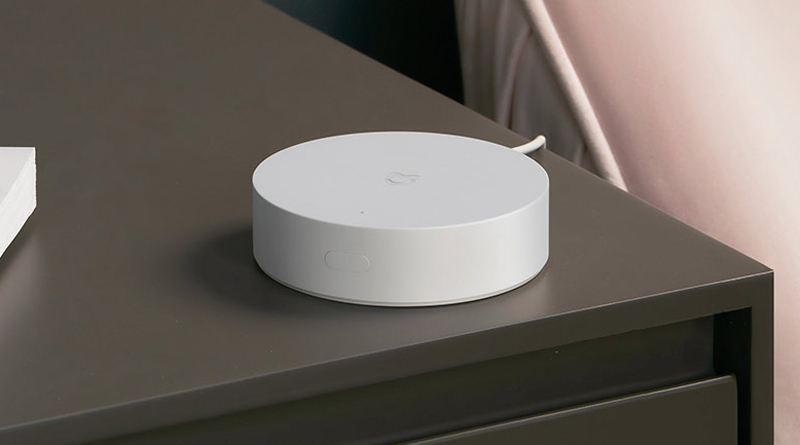


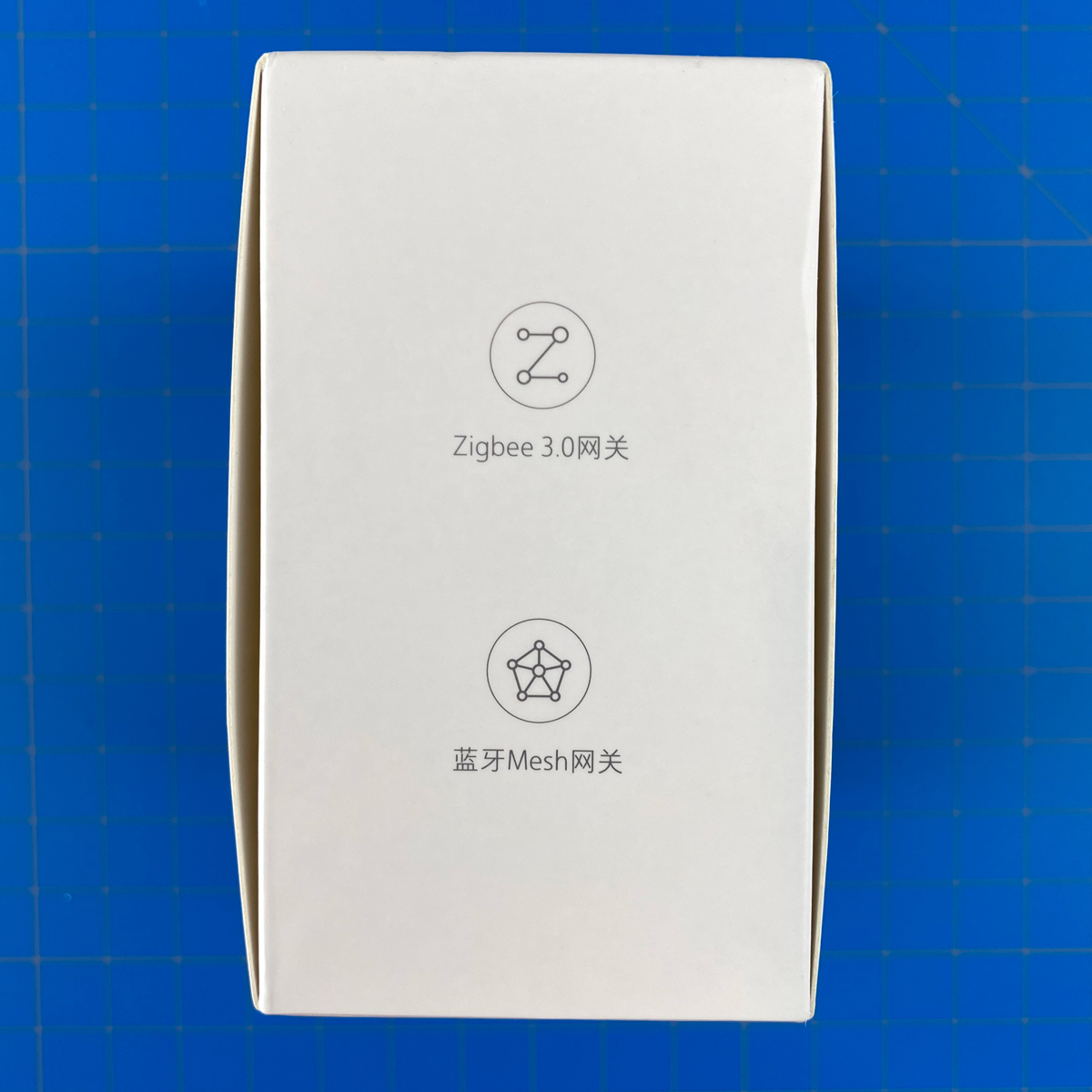
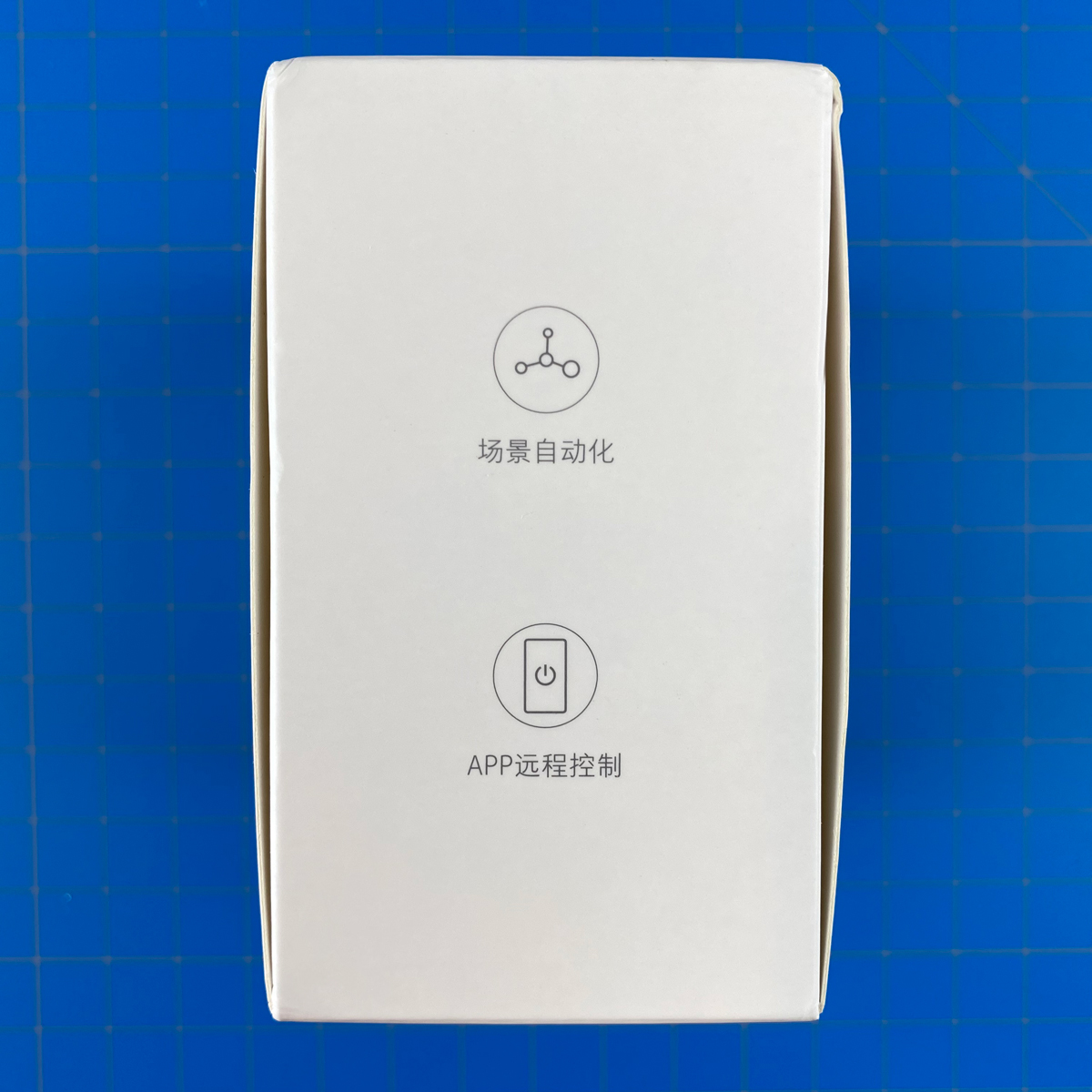
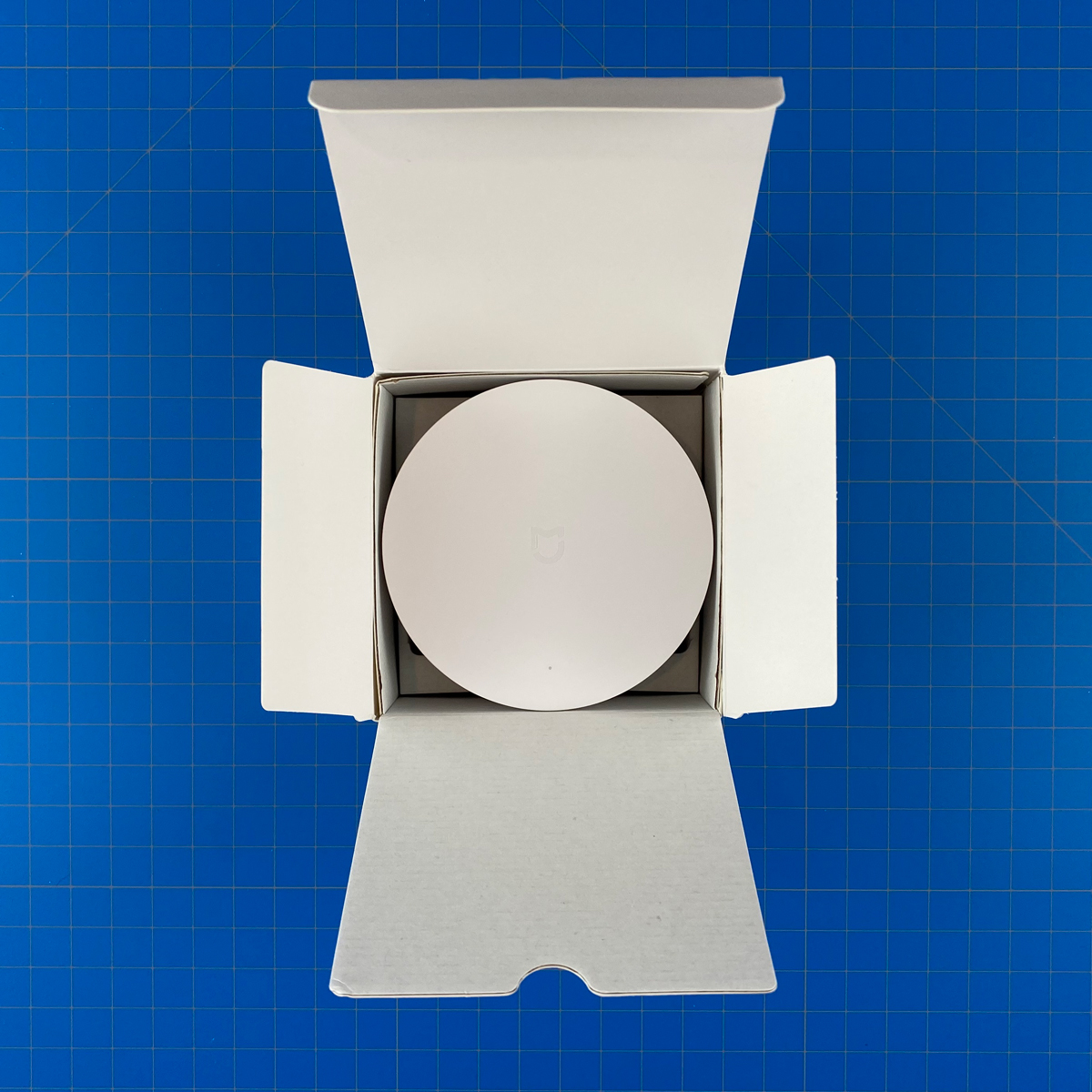

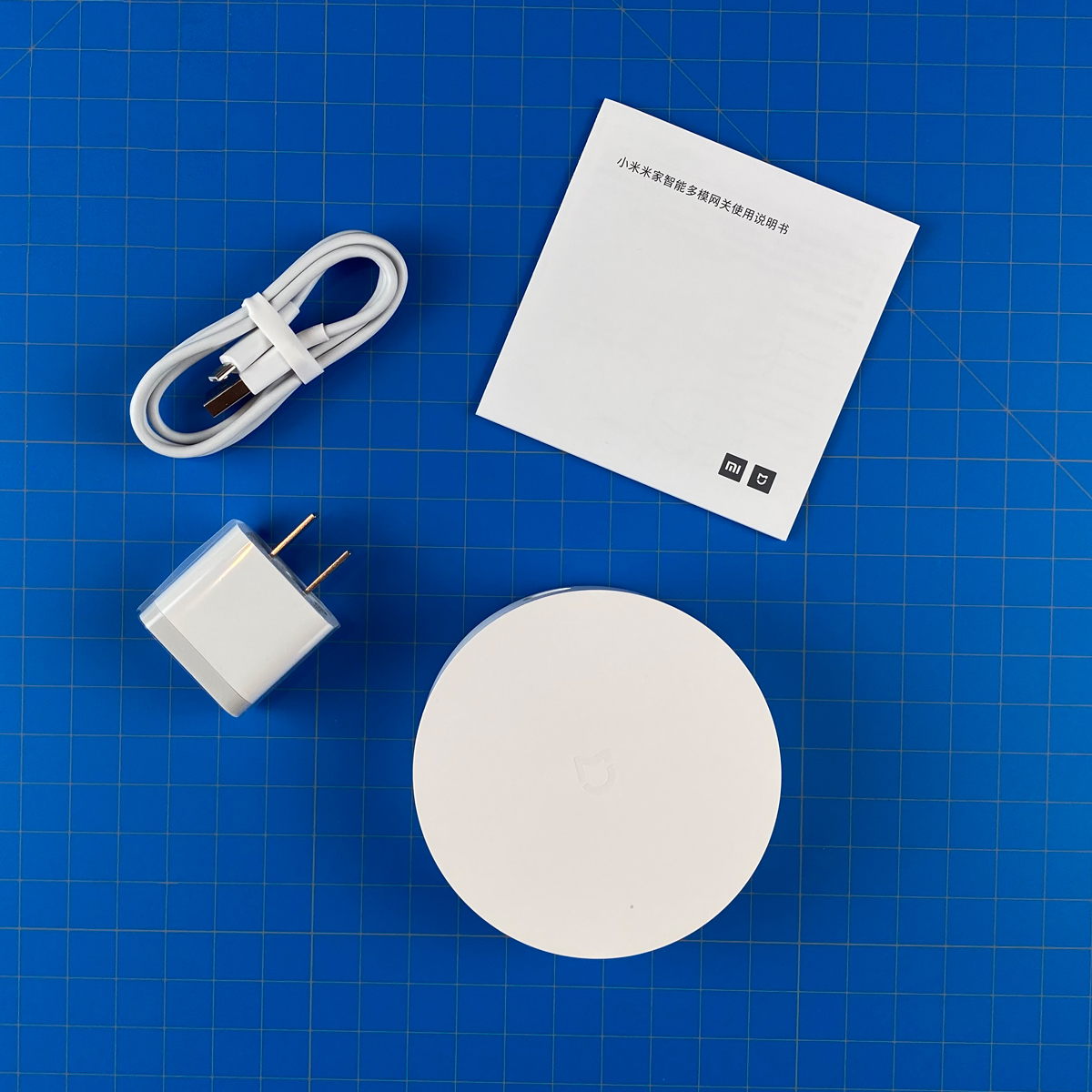
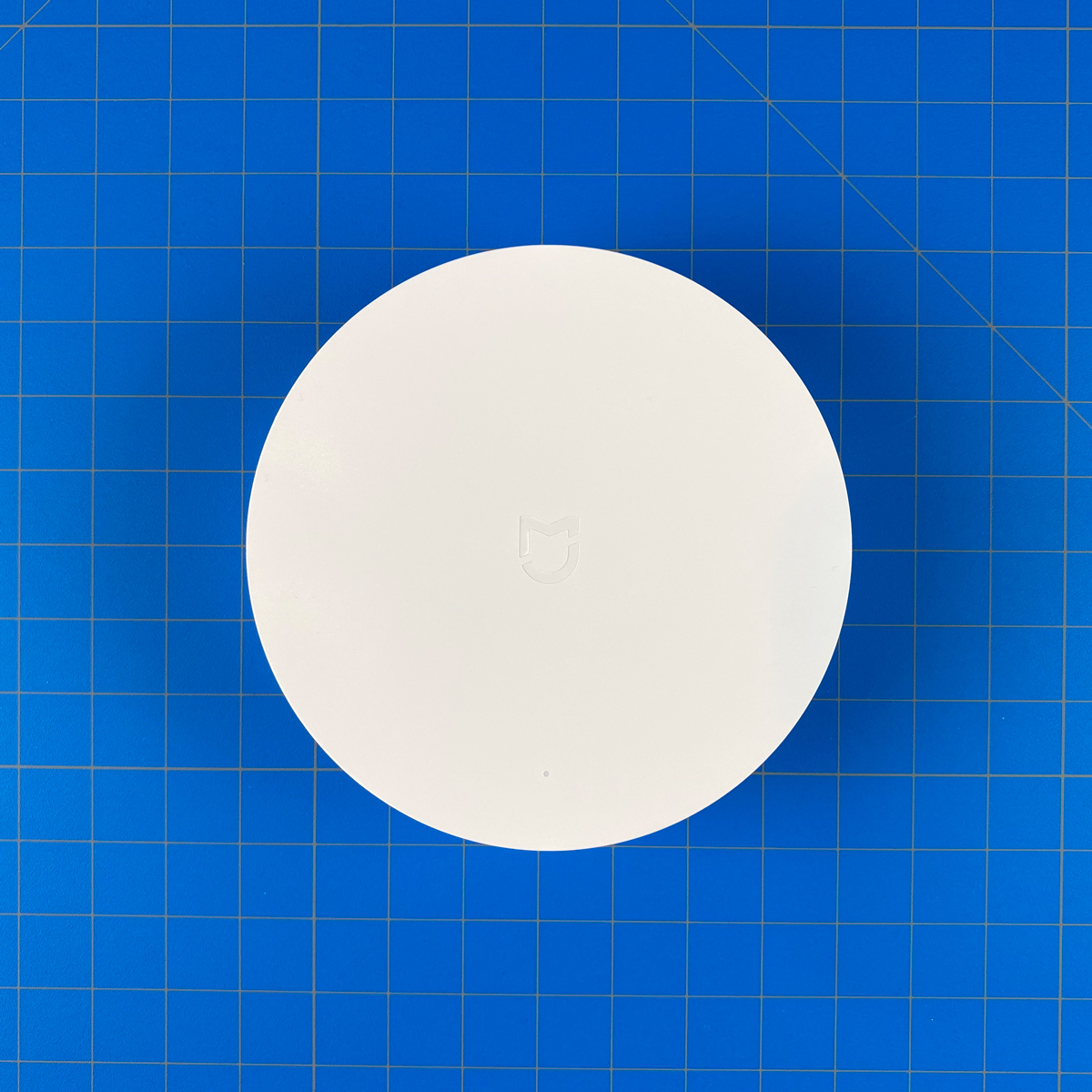

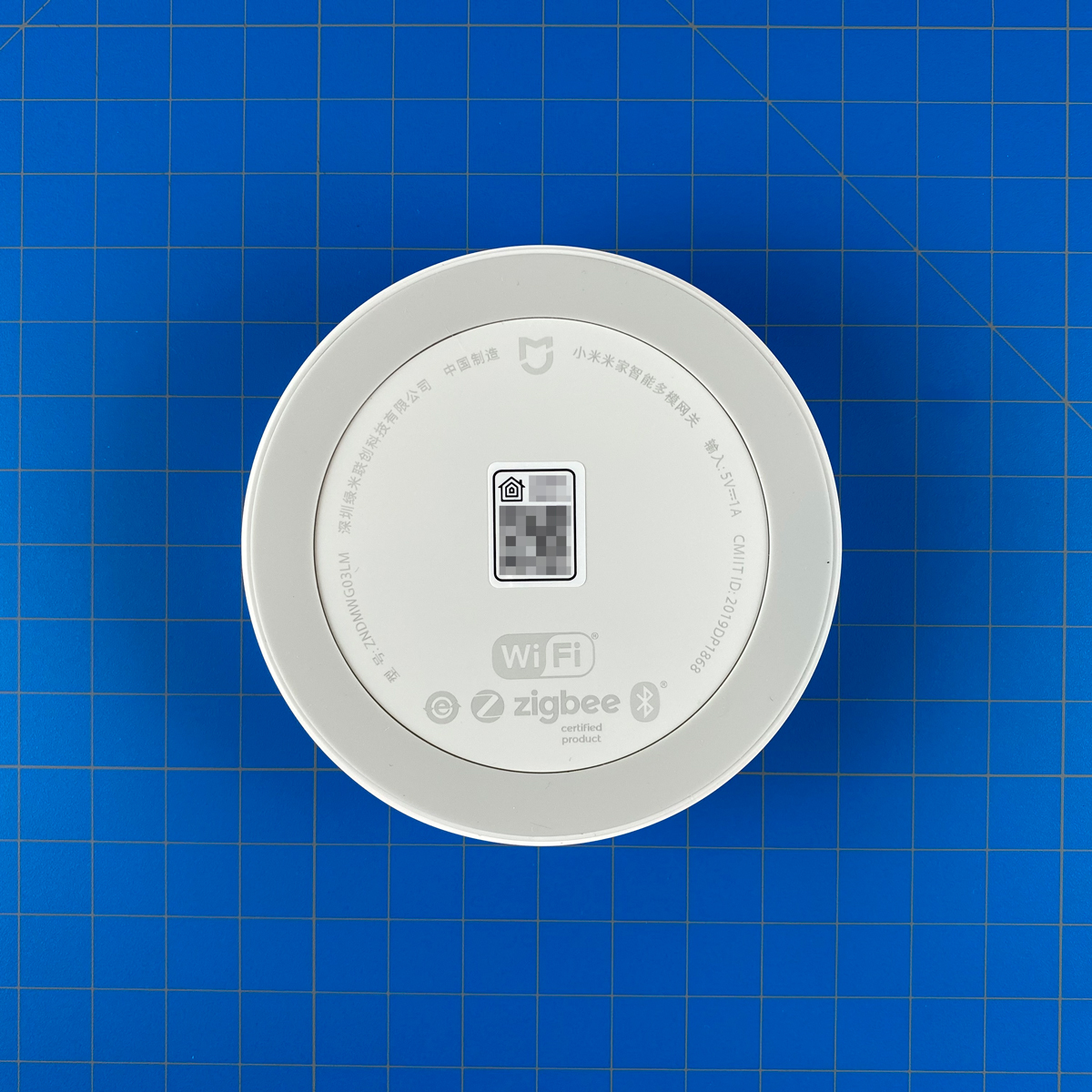
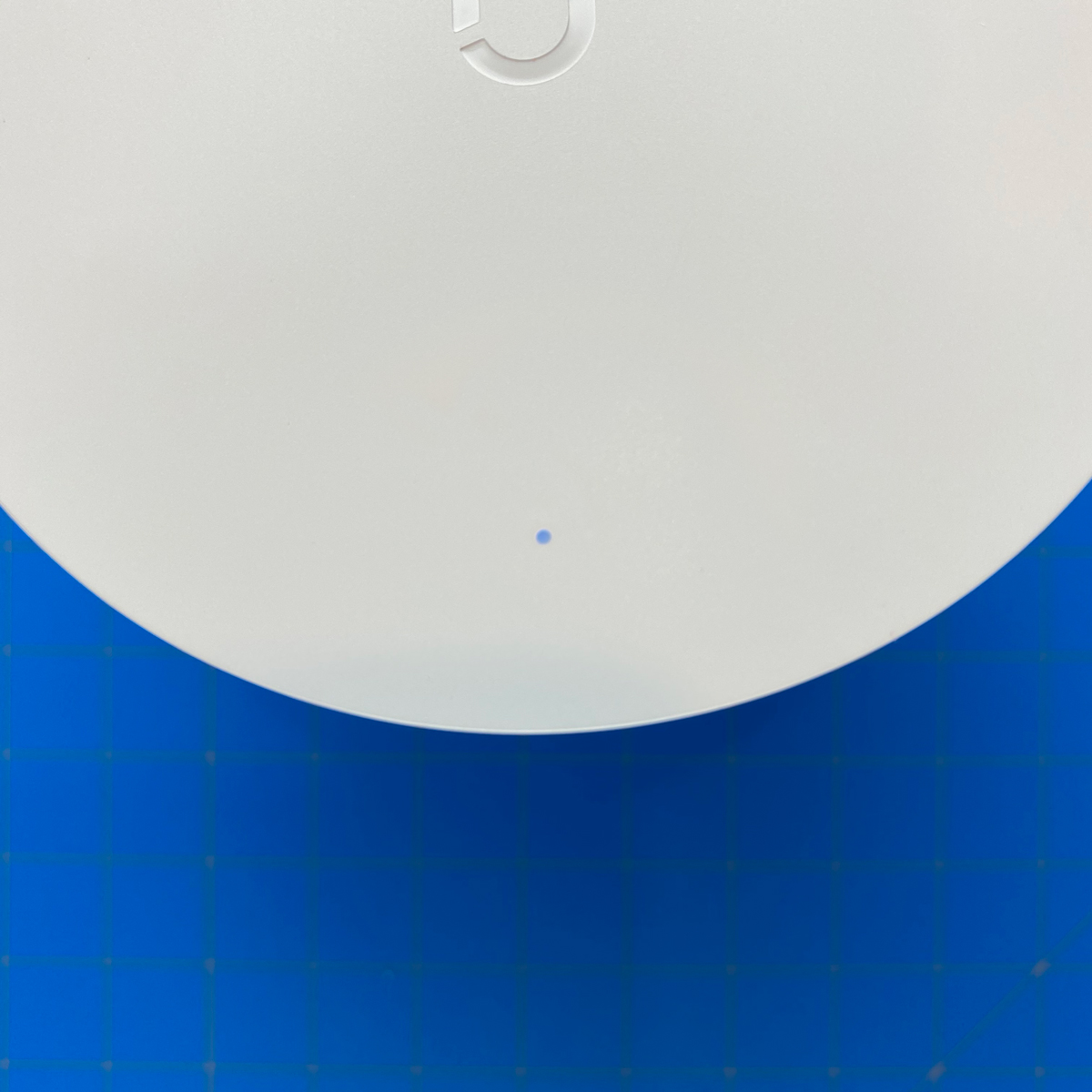



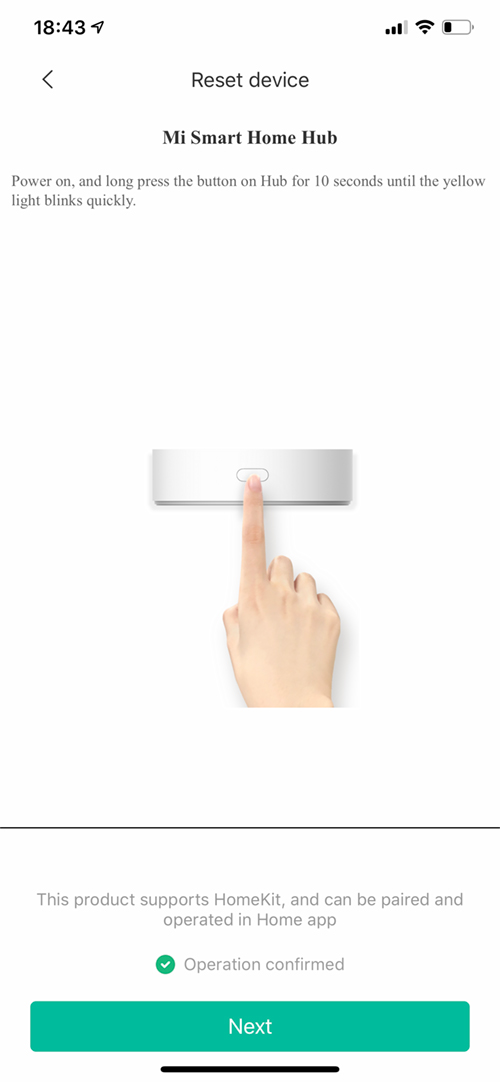
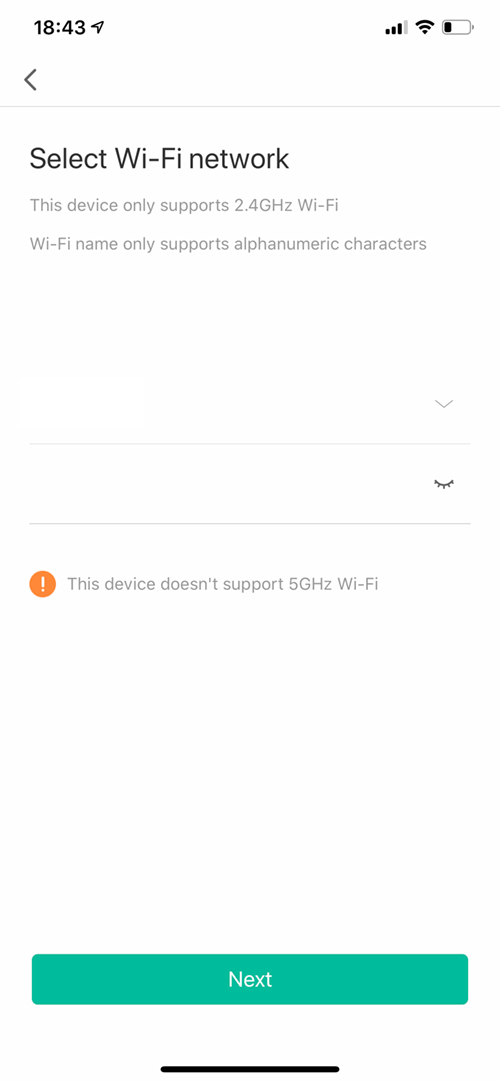
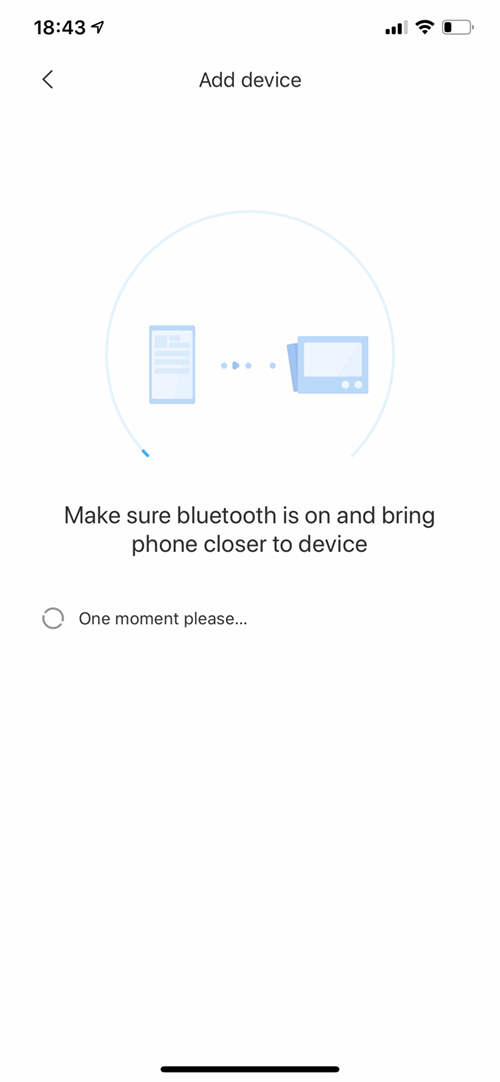
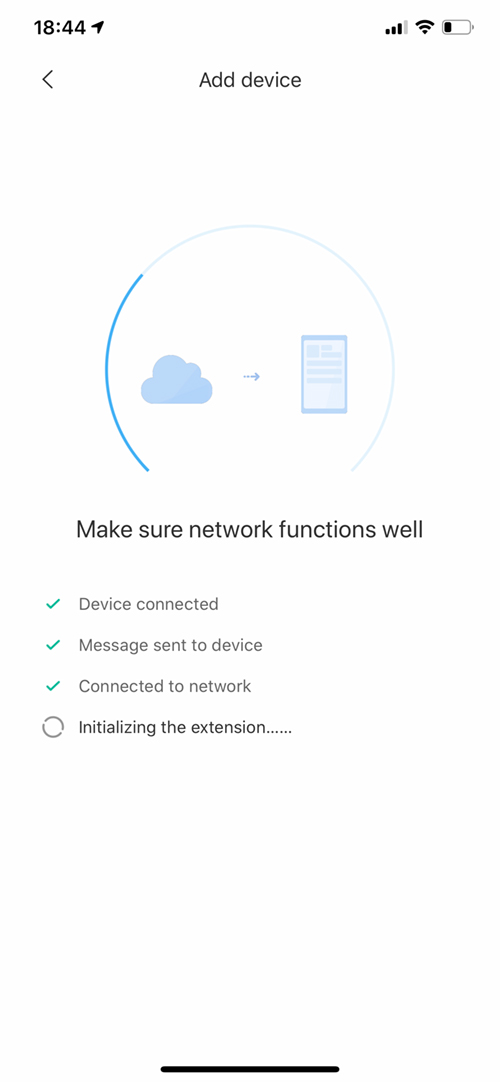


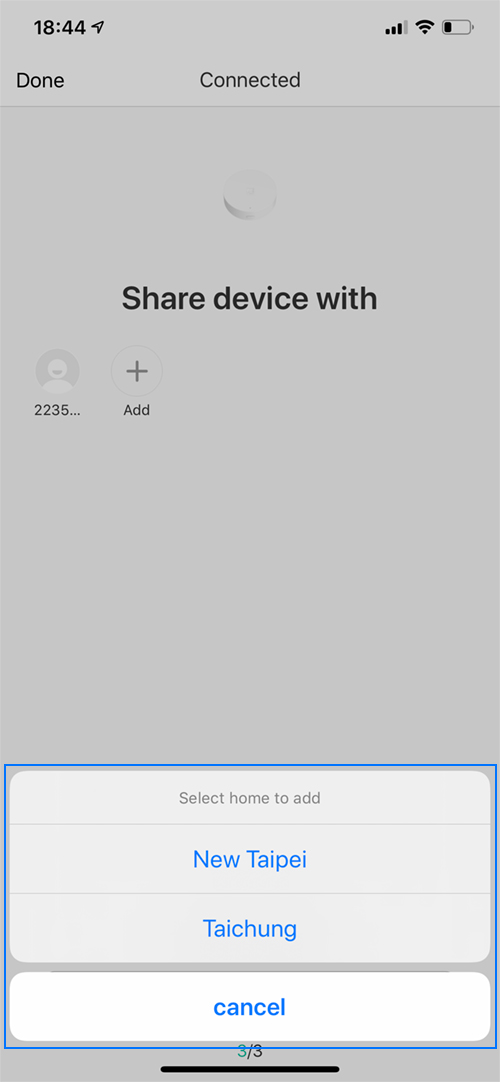
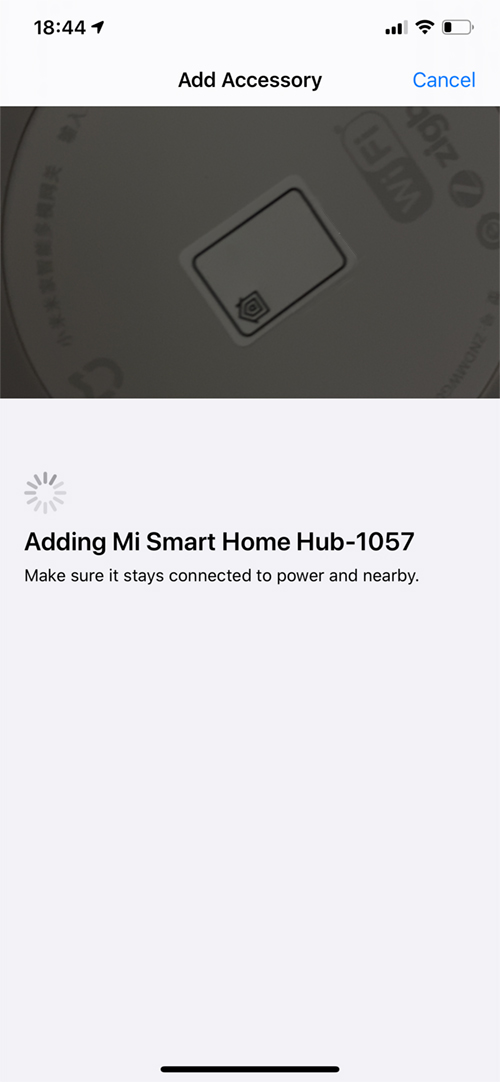

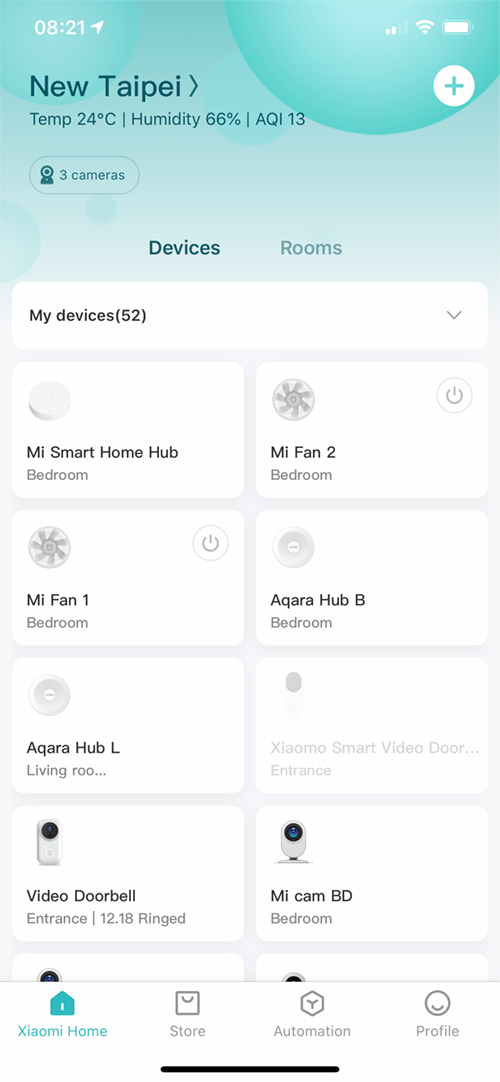
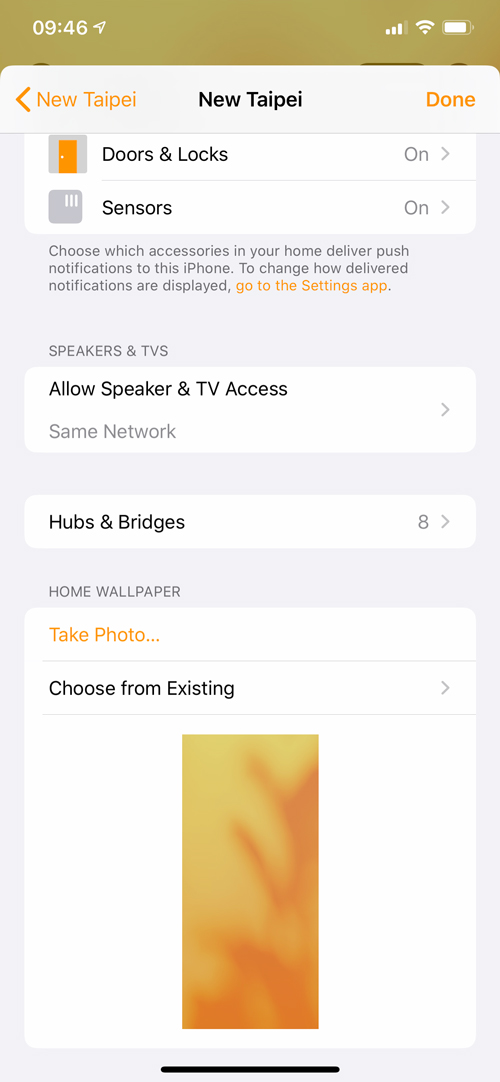
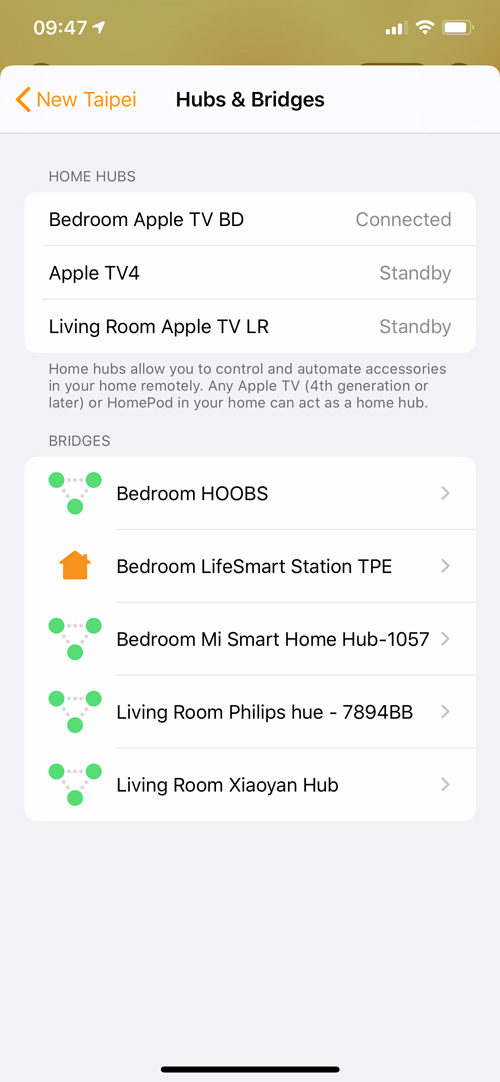
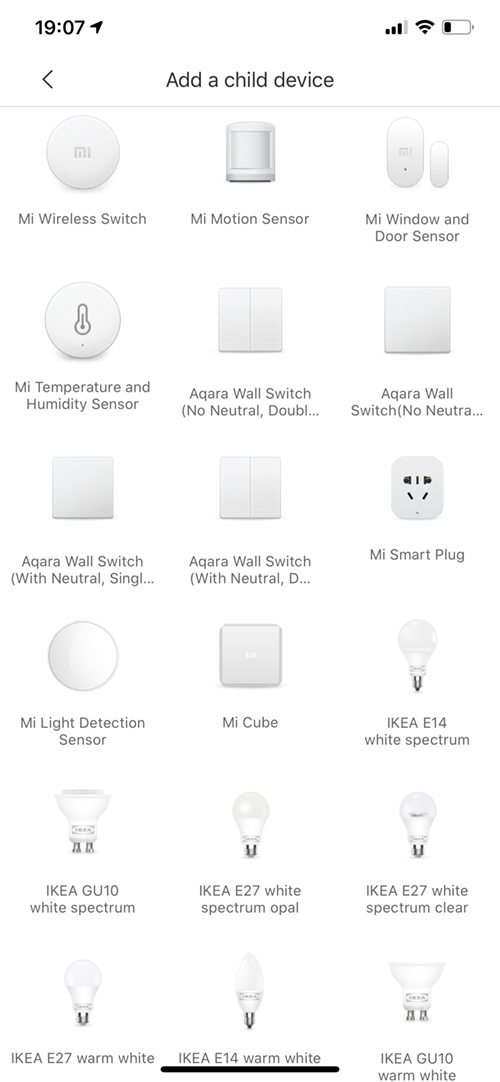
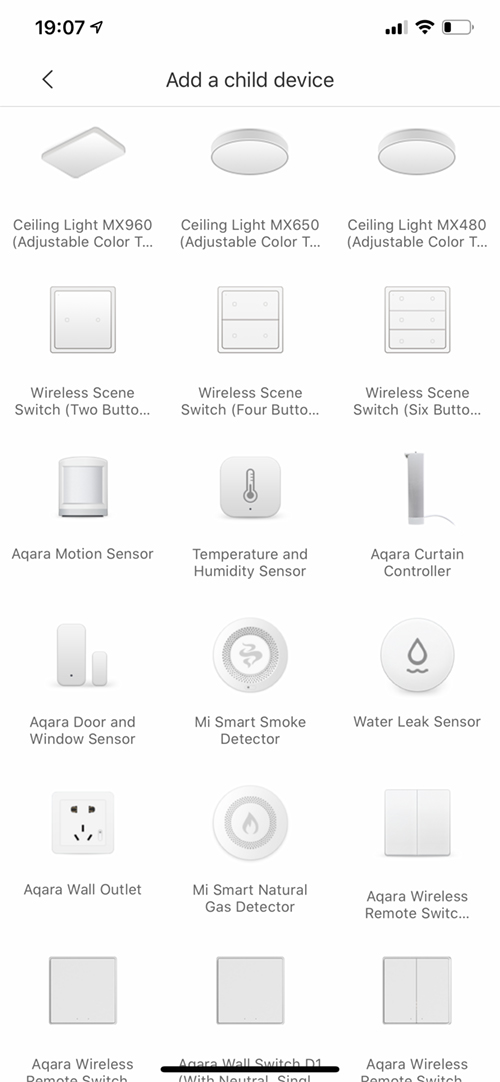

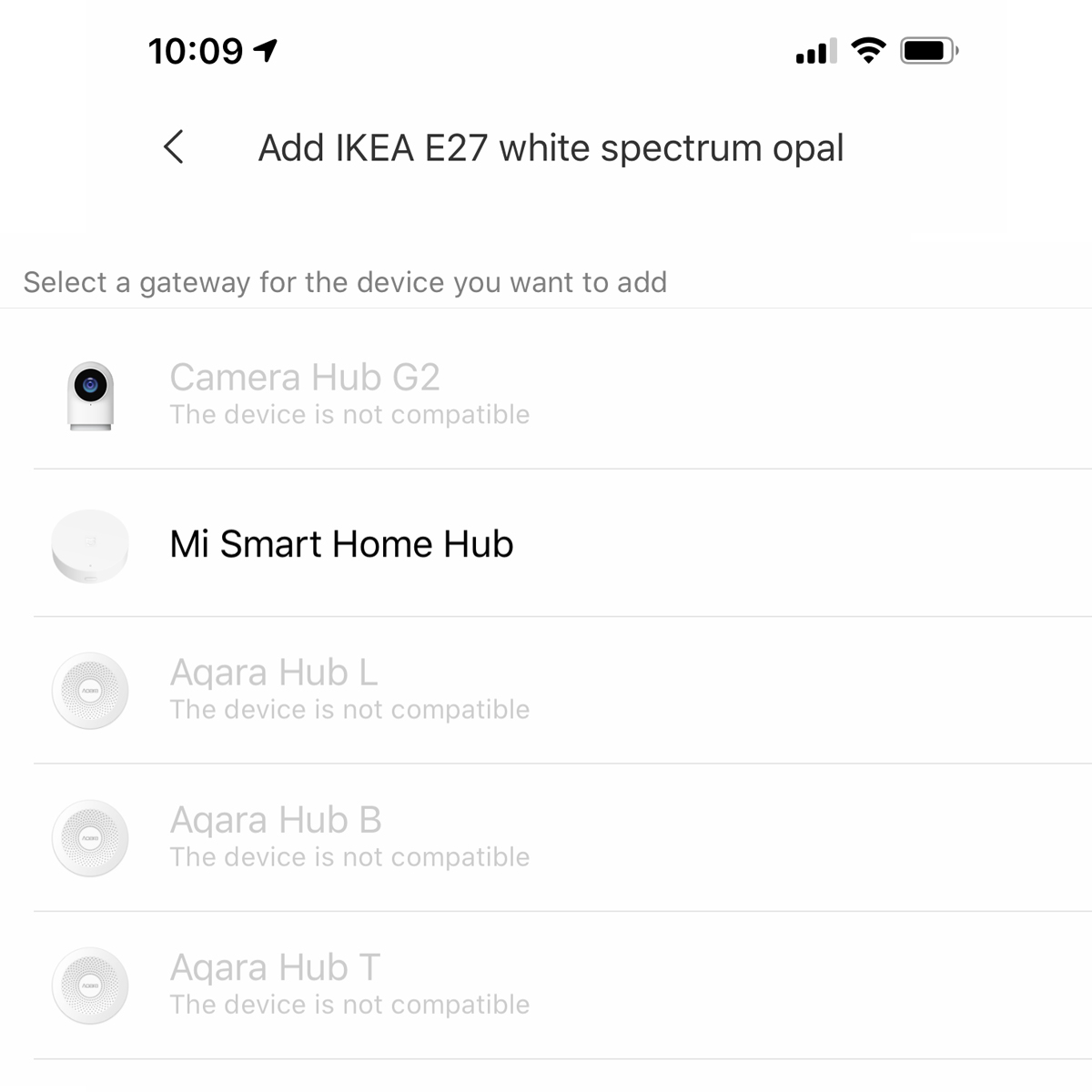
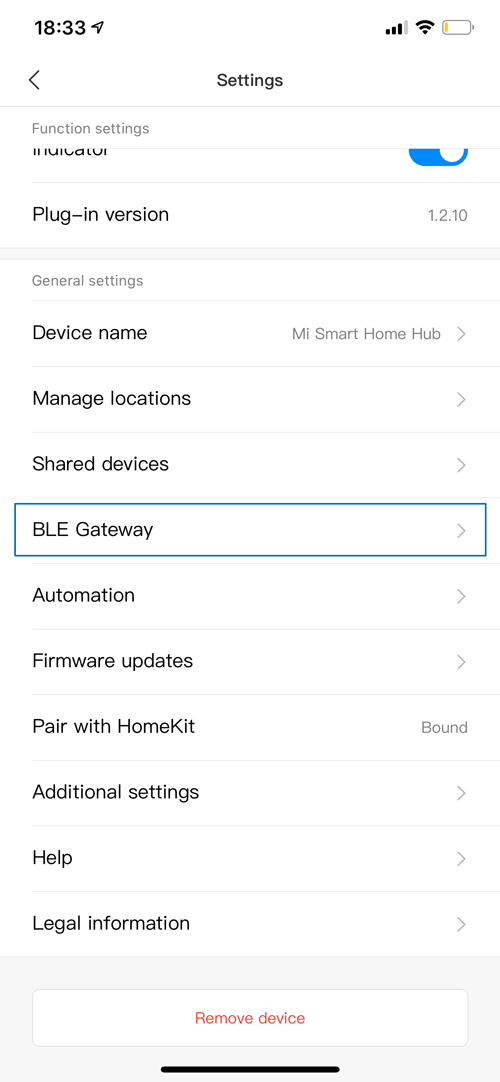
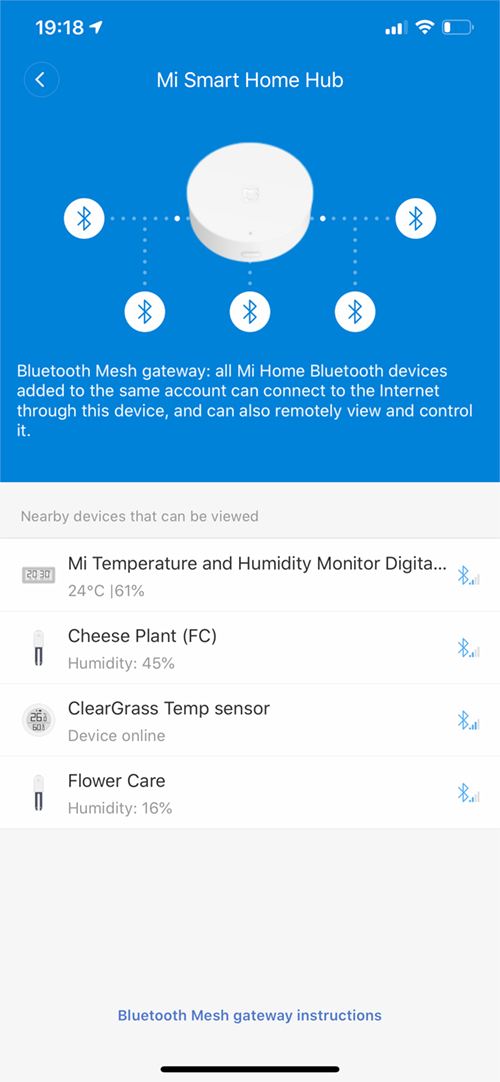


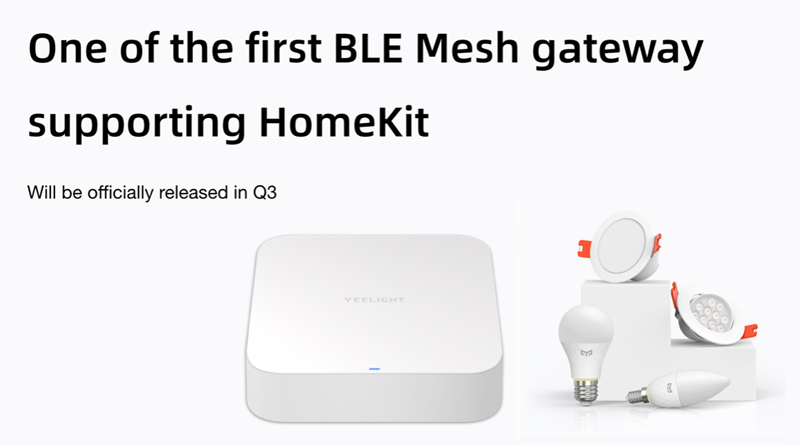

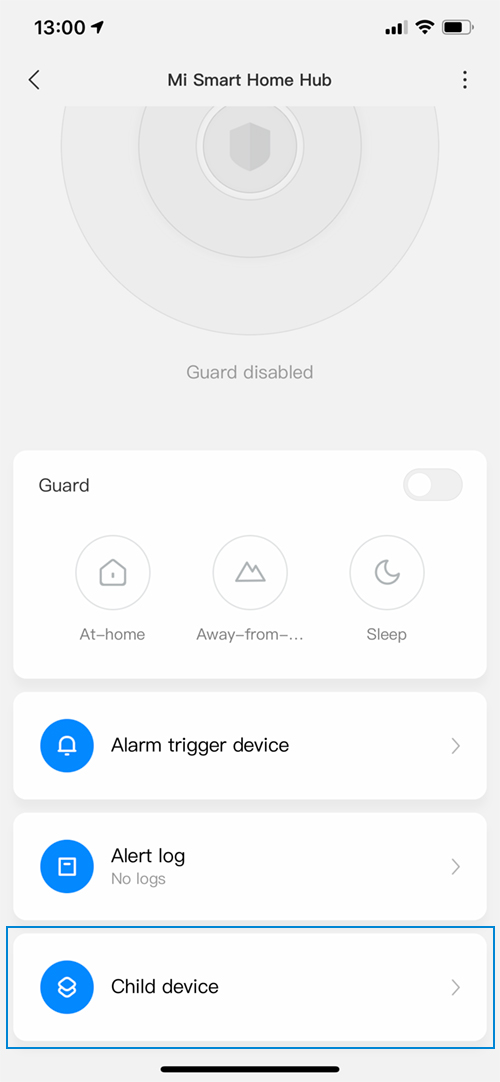

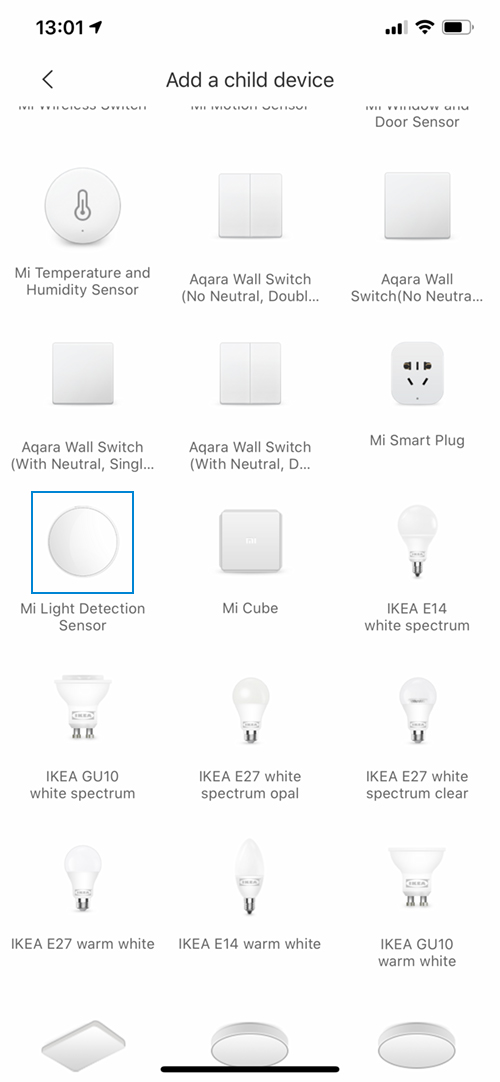


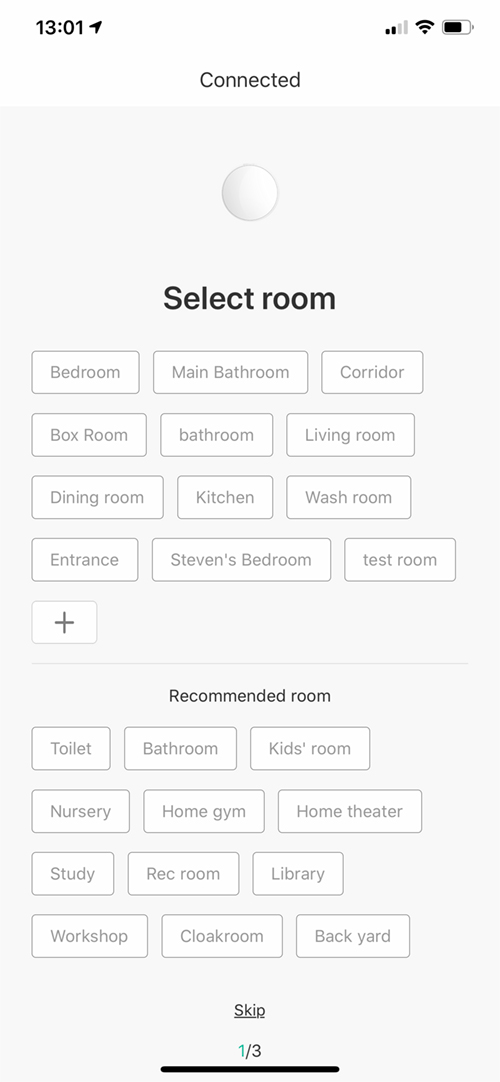

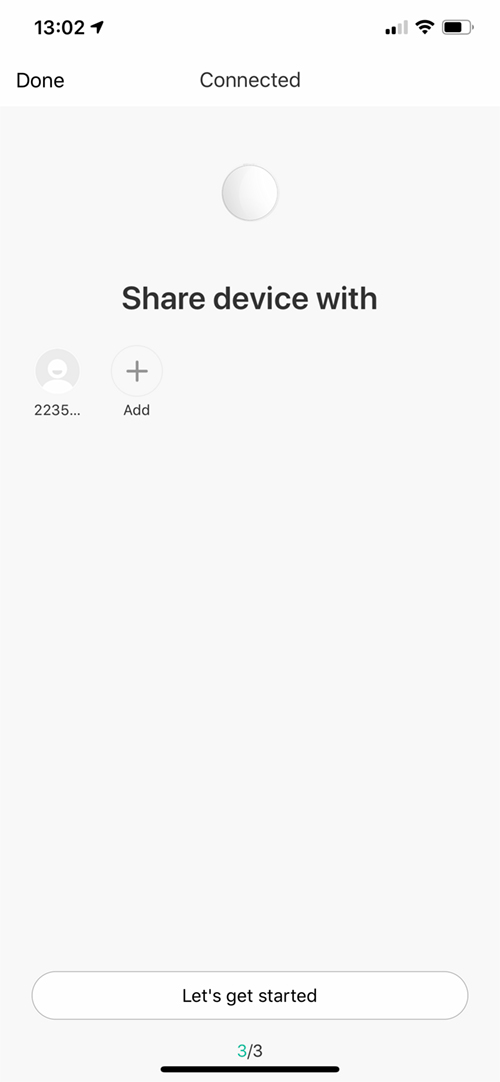

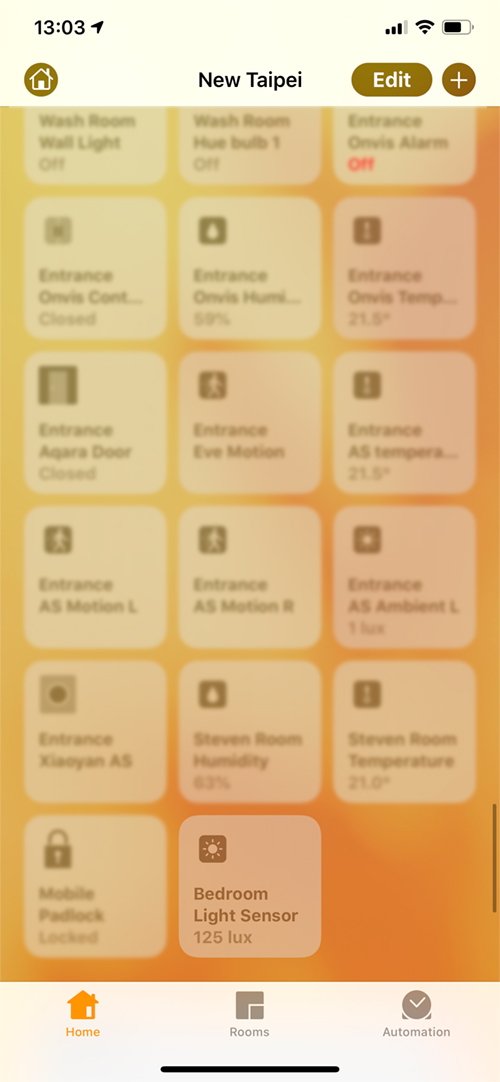

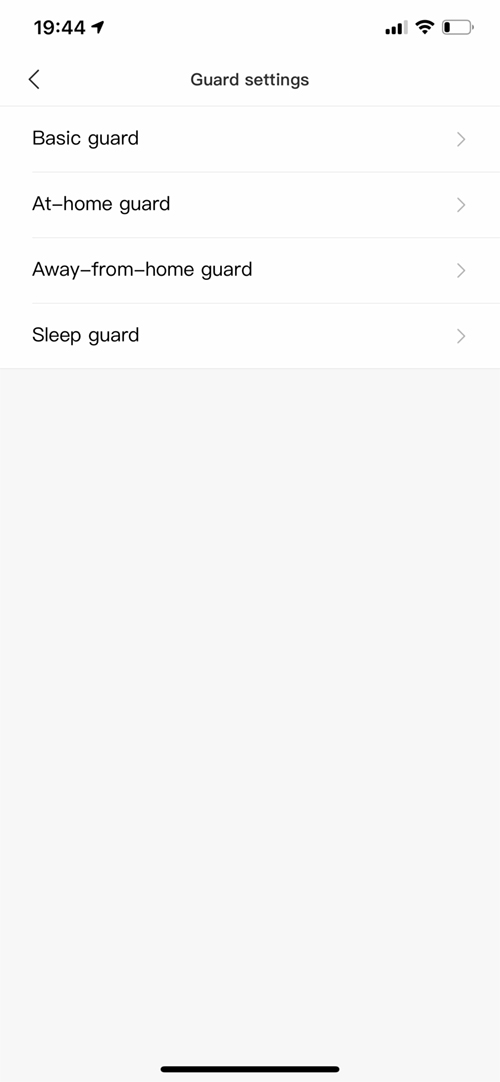
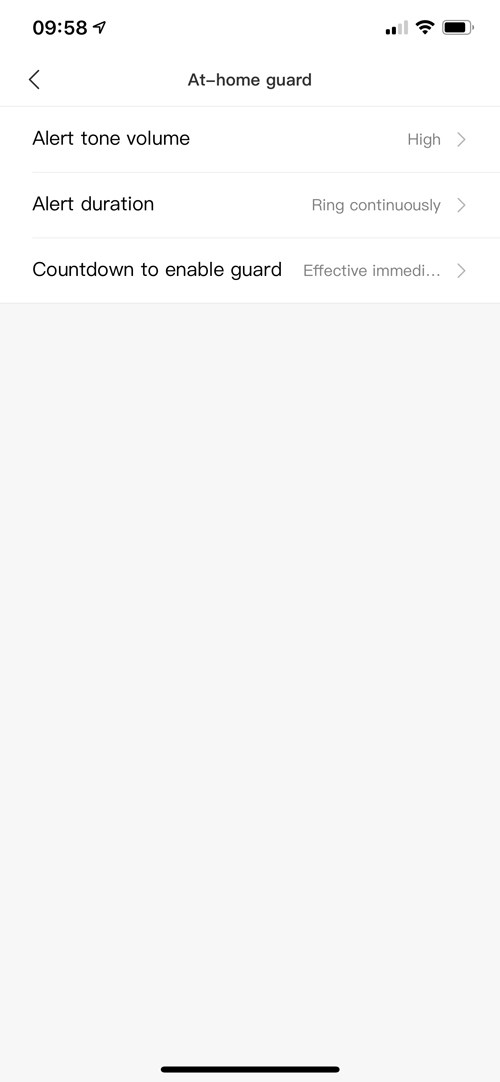



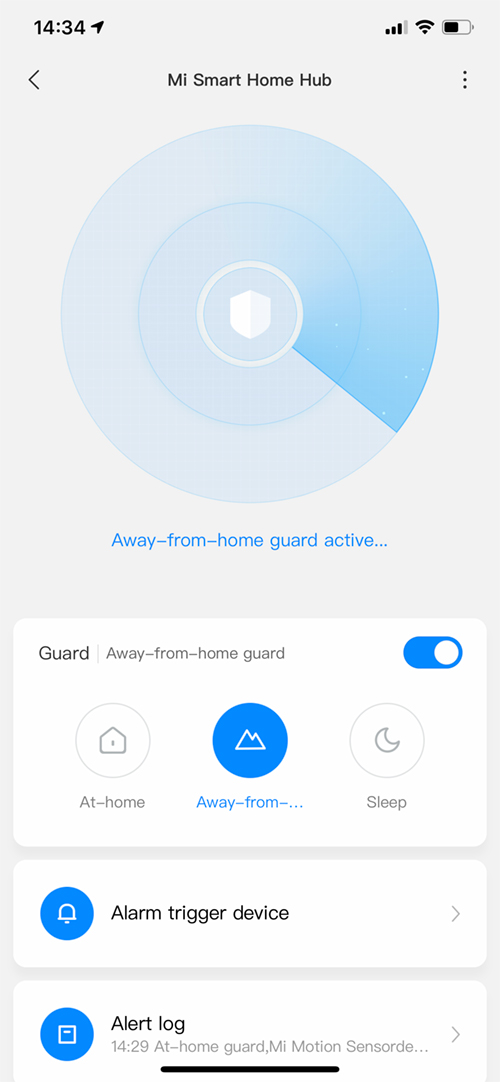

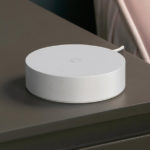
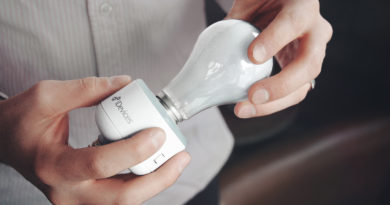
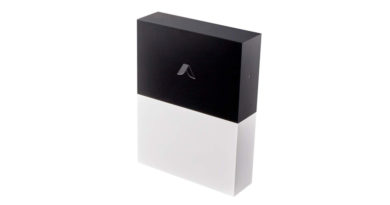
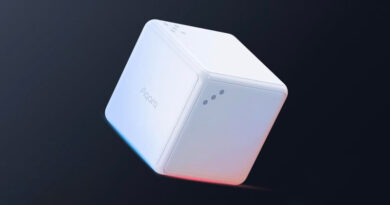
Hi Simon,
Thank you for this very extensive review!
I have several Mi Flora devices for my plants spread accros the house, and as you know its connectivity range is quite short, which forces me to move from plant to plant every time to sync their status. Would this hub alleviate this via its Bluetooth gateway? Or would you advice another device to make sure the Mi Flora devices sync all the time? As I already have three Aqara Hubs (European version) I don’t have much use for the HomeKit side of things, expecially if the alarm isn’t exposed to HomeKit. So for me the hub would be merely used as Mi/Aqara Bluetooth Gateway (simple or later via Mesh if appropriate)
Hi Jean-Paul, this hub will do exactly what you are hoping it would do, but if you don’t want another HomeKit hub, you might be be better off with the ClearGrass bluetooth Gateway. It’s much smaller, and maybe a bit cheaper. £7.83 56% Off | New Xiaomi Smart Cleargrass Bluetooth/Wifi Gateway Hub Work With Mijia Bluetooth Sub-device Smart Home Device
https://a.aliexpress.com/nGx9MMO4
Thanks Simon. Much appreciated. I think the Cleargrass is a better option then. I like the Aqara hub (much) better and have one for every floor for the best coverage. Another HomeKit hub with the exact same functionality would be too much.
Are you aware of other manufacturers with (plans for) (indoor/outdoor) plant sensors with HomeKit?
No problem. As regards a plant monitor, a company called Votion just announced such a thing, although I’m not sure when they’re going to release them. Here’s a link – https://homekitnews.com/2020/01/09/votion-unveil-nine-new-homekit-products-at-ces-2020/
My package with the Cleargrass BLE gateway arrived today and I have added it to the Xiaomi Home app after switching to Chinese mainland region. My Mi Flower Care sensors (5x) are also correctly linked to the gateway.
My Xiaomi Home is normally set to the Europe region in HomeKit only mode. Can I switch back and will the Cleargrass gateway keep on working because it’s already setup and linked to my wifi network? I checked, but Mi’s Flower Care app (separate app) doesn’t seem to see the gateway and defaults to the slow direct Bluetooth connection. How would you approach this?
I have the Aqara app *and* the Xiaomi Home app, but they are both set to Europe.
Hi Jean-Paul,
You can switch between servers in the Mi Home app at any time, although it’s not massively convenient. The ClearGrass gateways should keep working even when you’re on a different server, but you won’t be able to see the devices set with the Chinese server, when you sign into the EU server of course. Originally, you could only have the plant monitors connected to either the Mi Home app or the Mi Flower Care app, not both. Whether that’s still the case, I don’t know, but I think that app only allows for direct bluetooth connection, so the gateway will not acknowledge the gateway at all. For the plant monitor and the bluetooth gateway, the Aqara app will be of no use.
Hi Jesper, I think it’s only a temporary issue with some devices not showing up in HomeKit, as some other Aqara devices do get exposed. As for the toggle switch automation, the Shortcuts are partially broken in iOS13.3, if you have an Apple TV as your main home hub. I’ve been told if you have a HomePod as the active hub these automations should work. I’ve also been told the next iOS update has fixed this (at least in Beta).
Hi Simon,
Thanks, then I will have to wait for the next update.
By the way, replying on this forum is very difficult via an iPhone. Only allowes me to type one letter. So I had to wait until I was at a PC to reply.
Hi Jesper, yes I’m aware of the problem. It’s also affecting the search bar. I’m looking for a solution to the problem.
Another detailed and excellent review Simon 👍🏼
I just received mine and havent open the box yet. Im not sure what to do with it. Im using the 2nd gen Mi hub now and find the night light and speaker very useful and cant do without them. Because of this, I have to use two hubs. The only reason for the new mihub is for the zigbee 3.0, HomeKit and also a bit because of the BT hub. I also bought an Aqara hub. Now I got two brand new hubs still in their sealed boxes and wondering which one I should open. I will probably buy the M2 as well when it comes out. For now what should I do….? 🤔
Hi Peter, glad you liked the review. I’ve already got a few Aqara hubs, so I only bought it for review purposes, but it’ll be a handy backup if necessary. I think if you’re already using the other hubs with the light/speaker, and are still in need of another hub, then this can still be programmed to either trigger the alarms and lights in those other hubs, so it has its uses. Ultimately, as mentioned in the review, I think for me the M2 is the one I’m more looking forward to.
Hello! Tell me please, have you added support for the aqara b1 curtains?
It’s 2020 – they really should have used USB-C. I usually wouldn’t care but after using USB-C I find it a better, more secure connector than the older micro-USB.
I guess you’re not really plugging/unplugging on a regular basis but it would have been nice…
I agree, and from my so far recent use of USB-C it’s definitely more convenient. They’re already using USB-C in a few other devices, so I can only hazard a guess that it was to keep costs down as much as possible.
Hi Simon,
Great review! Just want to add a few things. On the website in the Q&A section (Chinese website), it actually says the hub supports up to 64 Zigbee devices.
Also, the Mi Home app has already been updated and many of the unsupported Aqara devices (those not shown in the device list when the hub was first released) are now officially supported, for example, the Aqara Mini Switch, Vibration Sensor, Relay Controller…etc can now be added via the Mi Home app.
Hi Edwin, thanks for the information. I’ll update the article with this information. Online stores were reporting support for only 32 devices, which is where I got this number from. As regards the updated list, I’m guessing this will change over time, so I could only report on the supported devices at the time of writing the review, but it’s good that it’s already increasing.
How does it integrate with Home automation software (Domoticz or OpenHA), is the développer mode still opérationnel ?
Hi Simon,
This question is a bit off-topic for this review but i noticed on the screenshots of the “Hub Supported Devices” there is a triple wall switch from Aqara:
* Aqara Wall switch D1 (with/without neutral, triple rocker)
Do you know if this an old or upcoming model, as I have never seen this on sale? or if you are aware of any link to buy it?
Been holding back replacing my switches as i cannot find a triple switch like this compatible with the Aqara hub. That one would really solve my problem.
Thanks!
Hi Carlos, the triple switch is a recent product by Aqara, but it’s not out yet as far as I’m aware. I’ll double check, but I’m almost certain it’s one of the many products still to come.
Thanks for the info Simon!
At least there’s hope they are still being launched somewhere in the future.
If you get your hands at any more details, let me know.
Appreciated! Thanks!
Any news or update with this emitting of annoying two long beeps, sometimes twice in a row ? Still occurs, 1.4.5 software
From what I’m told, the beep that comes from the device is whenever it encounters a problem, so it could be reporting something like a dropped WiFi signal perhaps, which may also be a bug as well. I’ve not seen any updates yet, but as long as they can provide an option to turn off the warning sound, that would be good.
Hey there! I loved this article!
I noticed that the aqara water leak added to the gateways does not showing up in homekit. Do you have similar experinence?
Hi,
Indeed these are still not exposed to Homekit.After contacting XiaoMi support find below the compatible accessories as of now
Controller: wall switch(without neutral ), wall switch(with neutral), wall socket,
Sensor: Aqara motion sensor, Aqara temperature, and humidity sensor, Aqara door, and window sensor,
I’m looking to first get started with Xiaomi/Aqara devices and am wondering if this might be the right option for me. Price is a factor for me and this hub seems like a good bargain, and I also like the flexibility of the USB power source. I don’t need the alarm/light function of the Aqara hub, but I’m still trying to read through all the information and discern whether or not there is additional functionality I’d be missing out on. I read the new article comparing the Aqara app vs the Mi Home app and it sounds like the Aqara hub can be paired with either app. Is that the same for this new Mi hub, can it be used through the Aqara app instead of the Mi app?
Also, I’m still not totally clear on how it works with what child devices are supported, and particularly for HomeKit. It sounds like most of what works with the Aqara app and is exposed to Home also works with this Mi hub and is exposed to Home (or at least very likely will be soon if it hasn’t been approved yet). Is that correct? Or am I missing something and there are devices that work in HomeKit through Aqara hub that we’ll likely never see working through the Mi hub?
Are there other significant differences I’m missing?
Is there a U.S. server for the Mi hub? Or would I be tied to the China server if I went with the Mi?
Is the potentially forthcoming new Aqara hub likely to be similarly priced to this new Mi hub or more similar to the current Aqara alarm hub? I suppose likely nobody knows this.
Thanks by the way. All your articles, reviews, etc for these things are very helpful.
Hi Josh, I’ll address each question is sequence. Currently the new Mi Smart Gateway cannot he added to the Aqara app, only the Mi Home app. In theory the hub supports pretty much all the devices that the Aqara hub can that are Zigbee, in addition to Bluetooth and Bluetooth mesh devices, but each device that already works with HomeKit via the Aqara hub, has to be certified again by Apple when it goes through the new hub, so not everything is exposed to HomeKit at present, but that seems to be changing quickly. This is why I didn’t create a de facto list, as it’s constantly changing. As for servers, this hub is initially only for the Chinese market, and so is only available in the Mi Home app when set to the Chinese Mainland server. As for pricing of the forthcoming Aqara M2, I don’t think it will be as cheap as the Mi Smart Gateway, and will most likely be in line with the current US hub, if not more expensive, but if they release it in China first, it’s likely to be a bit cheaper.
Thanks. Reading some more it sounds like there may be some devices I likely wouldn’t be able to add as they would be available only on the US server (and this hub, as you’ve said is only for the Chinese server). For instance, if I wanted the forthcoming US aqara wired wall switch, that could not be added to this Mi hub since it would be for US server only. Is this correct?
It would seem to be the case, as the Mi Smart Gateway can only be added to the Mi Home app, which uses region restrictions. The gateway isn’t supported on the US server at present. You’d be better off with the US Aqara hub and the Aqara app in this case.
Hi Simon,
Can you help me? How do I set up the Mi smart smoke detector for this? Thanks!
Hi!
I’m having trouble adding bulbs from ikea to the hub. I’ve tried e27 warm white and gu10 warm white. Nothing happens when I reset the devices and at the top of the screen it tells me to “please update your gateway”. I have the latest firmware installed and I’m on China server. Do you have any clue on what to do?
Thanks in advance
Hi Simon,
I don’t know if this ask is relevant because don’t know where exactly is problem but I hope you can help. Problem can be on gateway or on sensors.
I have this hub few days and is linked with 2 Mi Door sensors. Every day I have info in Mi Home app in sensors icon – 1.20 Close. Nobody didn’t open door ni this time and even in activity log isn’t anything about opening doors. Just on sensors icon is wrong time. After real opening door is time right, until next 1.20, when is real information replaced wrong information.
Don’t you know where can problem is?
Thank you
I have not encountered this problem before, but it sounds like it could be a bug with the gateway, not the sensor. The o lot suggestion I can make is too remove the sensor and re-add it, to see if it fixes the issue.
Hi. I’m looking for this on store(banggood) , but I find there is two version. One is XIAOMI Mijia Smart Multimode Gateway WIFI ZigBee3.0 and the other one is Xiaomi Multimode ZigBee 3.0. But only the second one have in description mentioned support for aqara product. The first one not. But both of these have the same product ID. So I want to ask If on the market are some other version of this gateway. Thanks
There is only one version of the new Mi Smart Gateway, so I wouldn’t take a lot of notice of the way things are listed on sites like BangGood or Gearbest, as they do get things wrong a lot. It’s the same model/product ID, so that suggests they’re the same model.
Hi and congrats on the great review!
Can you confirm/deny if the Ikea tradfri bulbs (gu10) are exposed to honekit with this gateway?!
Thanks!
Hi, I don’t have access to Ikea Tradfri bulbs, so I can’t say whether they are exposed or not, but I don’t think they will be exposed to HomeKit, in the same way that if you add these bulbs to the Hue Bridge they don’t get exposed to HomeKit either.
Hey there,
Thank you for the great review.
I have just configured this Hub. It works pretty well and the range seems to be better than Aqara Hub. However, I am facing the following two issues.
1. Aqara Oppal switches can be added to the Mi Home app. But it doesn’t show up in the Apple Home App. (Seriously need your help here.)
2. Unable to add Mijia Light sensor to this hub.
Hello Harnish
It would seem that some devices that work and are certified to work with the Aqara hub, are yet to be (re)certified to work with the Mi Gateway for exposure to HomeKit. This is currently the case with the Aqara Opple switches, unfortunately. The light sensor should work however. When you try to add the Light sensor, what is happening?
Thank you for the quick revert, Simon. This is amazing; it would have not been possible to clarify for either Mi or Aqara themselves so quickly.
I have added the light sensor and it is visible in Homekit as well. How long do you think will this take for Opal switches to be exposed to Homekit via Mi hub?
Hopefully it shouldn’t take long as they’re already certified via the Aqara hub, so I’m assuming the process should be fairly straightforward, but it’s difficult to give you a definite answer.
Hi Simon, this is the most informative site for the beasts, thanks a lot for great work!
I wonder if you can help me. I have a few devices working with mi home app set to Europe. Now I would like to add a couple of smart power plugs into the network. How can I do this without changing settings to China Mainland (my vacuum cleaners not seen there) or installing second app? I have no hubs so far. There seems to be Zigbee smart plugs for Europe already on local amazon but I found no hub for using them without dances around land settings. What are my options? Waiting? Going for something more sofisticated than Zigbee plugs? Thanks!
Hi, it depends on where in Europe you live regarding availability, but there are a couple of smart plugs available with Zigbee Mi and Aqara. For either of these you’ll need a hub, and if you want HomeKit integration, you’ll need the EU Aqara hub, which is only available to order from a few countries at present. If you don’t want HomeKit integration, then the Eu Mi hub will be fine. There’s also a WiFi plug for the EU, and that doesn’t require a hub, but it won’t work with HomeKit.
You got my comment confused 😉 I’m not looking for a smart plug, but wanted to know how you setup the Clearwater BLE gateway which you recommended 🙂 See our conversation.
delete above comment please – wrong thread 🙁
Hi Simon,
Great article, thanks for all this usefull material. My question is not really related to the latest gateway, but I cannot find an answer anywhere, so trying over here 🙂
I’m using all my Mi devices on the Mi app with EU server, and wish to add a gateway : I saw that the Mi Hub was now listed in the devices you can add from the EU server. Can I buy a chinese version and will it work on the EU server ? (NB : My light bulbs were for instance not available on the EU server originally but I was able to add them very recently, so I was wondering if there was an opening strategy towards this direction from Xiaomi.)
I know there is a EU version of the gateway but impossible to find it online on it’s own, it always comes with the large (and expensive) sensor kit.
Many thanks in advance for your reply
Hi Maxime,
Glad you found the review of some use. To answer your question, yes you can add the Chinese Mi Hub to the EU server, but you will get what is commonly referred to as ‘error 7’. It will still work, but you can’t access the settings for the hub, so when you click on the tile, you’ll get the error 7 issue. This also means there’s no way to change the language settings on the hub, so it’ll be stuck with a Chinese voice. The good news is that you can still use the hub in automations, and you can still add sensors to it, but you have to do it manually, by clicking on the hub’s button 3 times to get into pairing mode so you can add the sensors. Chinese sensors will work on either the Chinese or EU hub as well.
Thank you so much Simon for your feedback !
It was driving me crazy not to find any clear answer about it anywhere.
I will then give it a try, even with this error 7 !
Have a nice day
You’re welcome anytime!
Hi Simon,
Getting back to you on this point.
I received my chinese gateway yesterday : I cannot connect it on the EU server, never detected (so I don’t even see the error 7). I tried to connect to the hub wifi first, but doesn’t help.
It seems to work fine on the chinese server, I added it on this one, but it doesn’t make it show up neither on the EU server afterwards.
Is there any trick to make it work on EU server ?
Thanks again for your help !
Maxime
Hi Maxime, unfortunately with the latest devices, they’ve altered how they can and can’t be added to different servers, and with the Mi Smart Gateway, it can’t be added to any server other than the Chinese mainland one, which is why you don’t even see the Error 7 message. There is currently no way around this I’m afraid.
Quite a jungle to see through the different products and servers !
Thanks anyway for your reply 🙂
Maxime
Yes, I wish they would just remove these restrictions totally.
Hi Simon, Does the hub expose the Flower Care Bluetooth devices to HomeKit? Or is there a way to get the Flower Care devices exposed to HomeKit via any hub(s) currently on market?
Hi dan
the Flower Care monitor does not get exposed to HomeKit, and there’s currently no official device that will get it exposed to HomeKit. However, there is a HomeBridge plugin that will expose some of the sensors in the device to HomeKit.
Just updated to 1.4.5_0016. Let’s hope beeping issue and particular devices not being exposed to HomeKit have been resolved.
So pleased I came across this review, really detailed. Just one part that was missing was that this hub is a WiFi hub too isn’t it? Does this mean you can add Wi-Fi accessories too? E.g. NonZigbee start switch, Air Purifier, Robovac etc.
Thanks
Hi Ben, glad you like the review. It’s only WiFi in the sense that it uses WiFi to connect to your network. As far as I’m aware, WiFi enables devices don’t require a hub to turn connect to your network, and this hub doesn’t give you any option for that.
Hi Simon, thanks for review. Recently I bought Aqara qurtain controller B1 and this Gateway and found out that hub doesn’t support the controller. Do you happen to know any Chinese sites or forums, where I can track version updates and other info related to device support list? Also, should I wait for firmware update or wait for new Aqara M2 hub, or buy old one that currently support b1 controller?
Thanks
Hi, probably the best resource is either the forums on Aqara’s own website, where you can ask questions relating to your issue, or alternatively, join Reddit, and the r/Aqara sub, where you can ask others for help. I think the Mi Smart Gateway will eventually support more products, otherwise it would be a waste of time making it, but I think to get all the devices it can be matched with certified, it will take time. If you’re in a hurry, it may just be easier to buy the current Aqara hub.
Hi ,
I can confirm that Aqara Leak Sensors are still not yet exposed to Homekit on this hub, as i tried this today
Does anyone know if the Aqara Motion Sensors are exposed before i go out and buy them?
Hi guys,
i am encountering issues with Mi Home Gateway 3 and 2ps of aqara motion sensors. From time to time (mostly after night if no motion triggered long period) that sensor are unable to switch ON homekit automation. It takes 1-2 mins to take action. Following next hours works fine. Could be it an issue with aqara motion sensor or gateway firmware issue?
I use China region in Slovakia.
Hi, two questions; were the automations running ok, at first and have now started to act strange, or have they always been slow? Secondly, how many Home Hubs (Apple TV, HomePod etc) have you got in your setup?
Hi,
I have Apple TV last generation, Homebridge.io (Raspberry Pi) and Mi Home Gateway v3. All other automations works fine but Aqara Motion Sensors have loooong delay when they are idle during night or few hours during day.
The interesting is that Aqara Motion Sensors logs in Mi Home App triggers motion, but that triggers are not immediately showing in Homekit :/
Reply to second questions: They always been slow from the time installation of Mi Home Gateway v3 with Aqara Motion Sensors
Hi Simon,
great review, thanks for it, but…
I have bought this hub from Ali and tried many sensors, switches and bulbs, and here are my findings: This device has lot of features “on the paper”. For that price it would be great gateway if it would be supported by European or US servers. But restriction to support only through Chinese server makes an useless crap from this device. Responses from Chinese server are horrible here in Europe. Some of notifications comes with 15 minutes delay, some comes not at all. Movements of aquara magic cube are sometimes transferred to commands after 20 second sometimes they are completely ignored. Switches are ignored in more than 50% of cases. There are periods when switches don’t work for at all for couple of minutes. So I really recommend not to buy this device if you are in Europe and not in China inside the Big Firewall.
Lubo.
Hi, it’s definitely not very good if you’re using it outside China, I agree. But it is only designed for China, so unfortunately it’s never going to be great outside of mainland China. It works in Taiwan, with the China server, but then Taiwan is right next to China, so it’s never a problem. I think it’s better to wait for the Aqara M2 or use the EU aqara hub really.